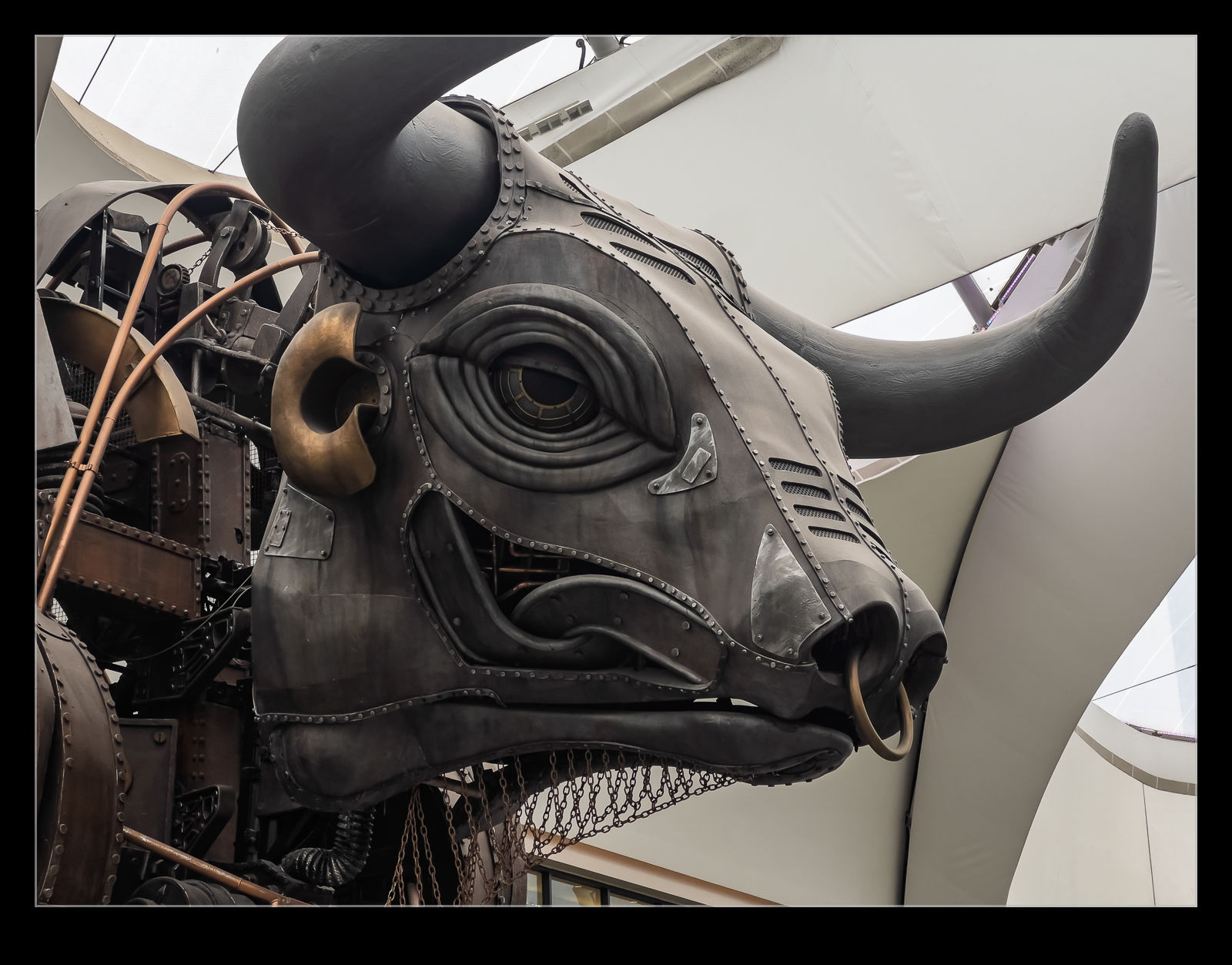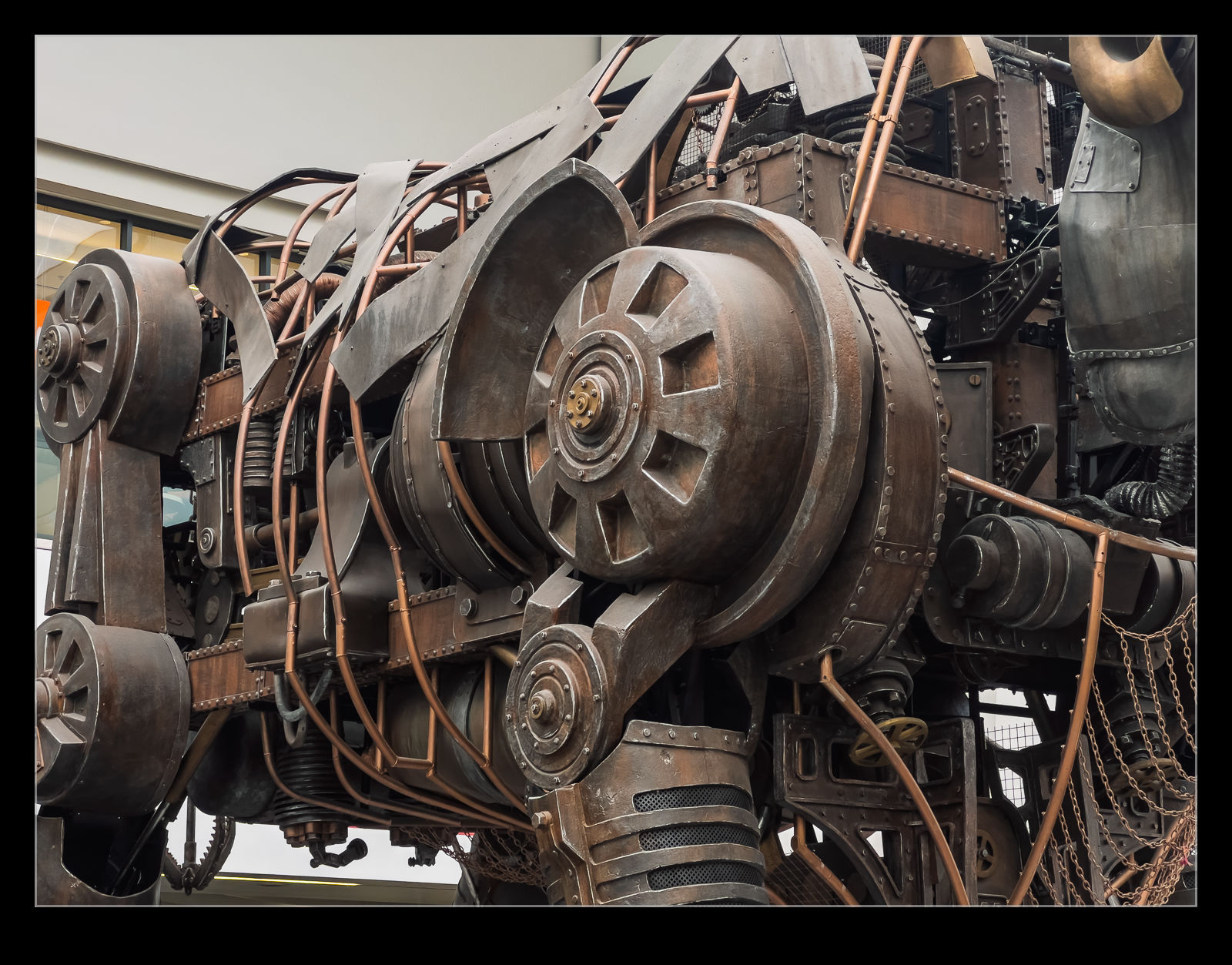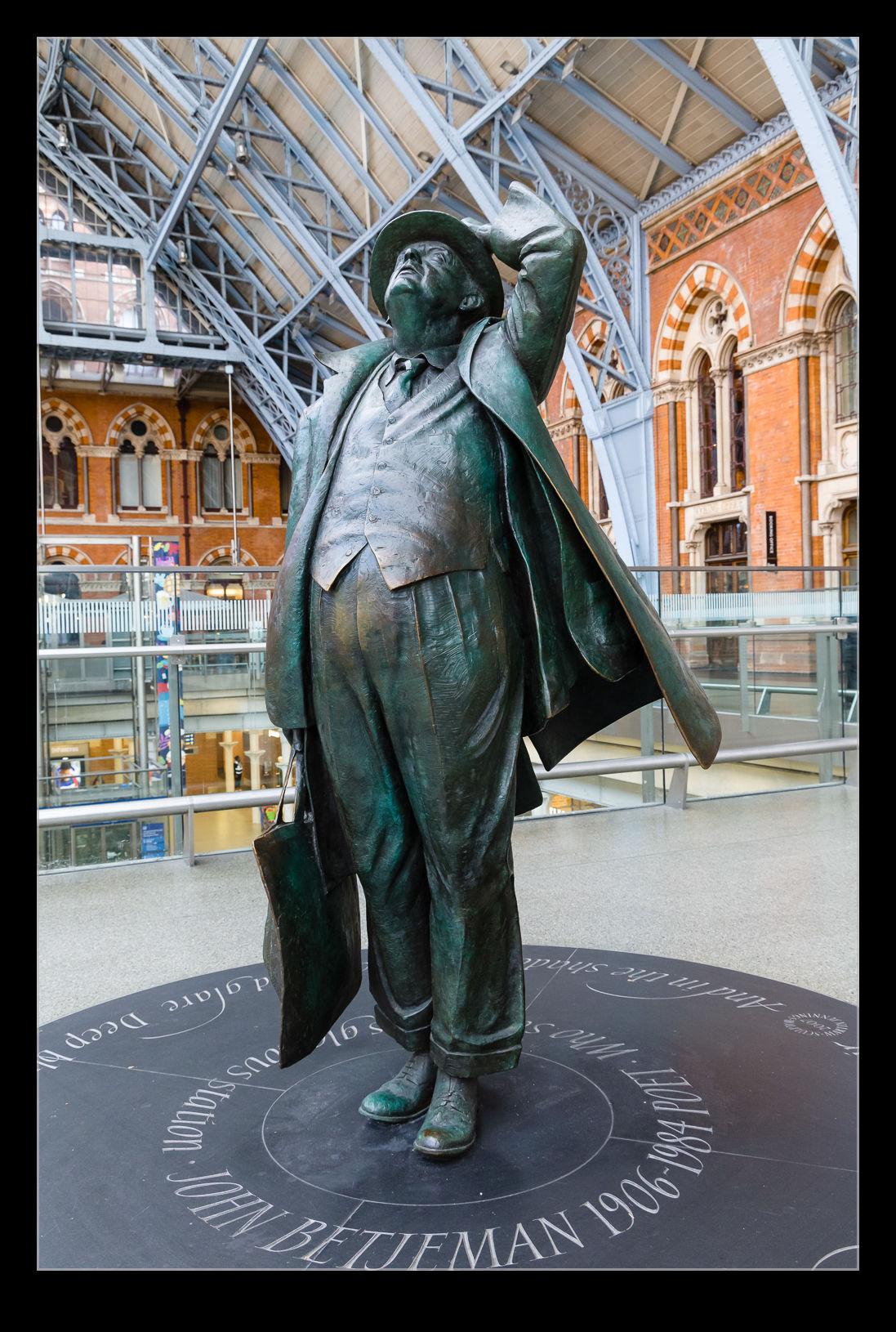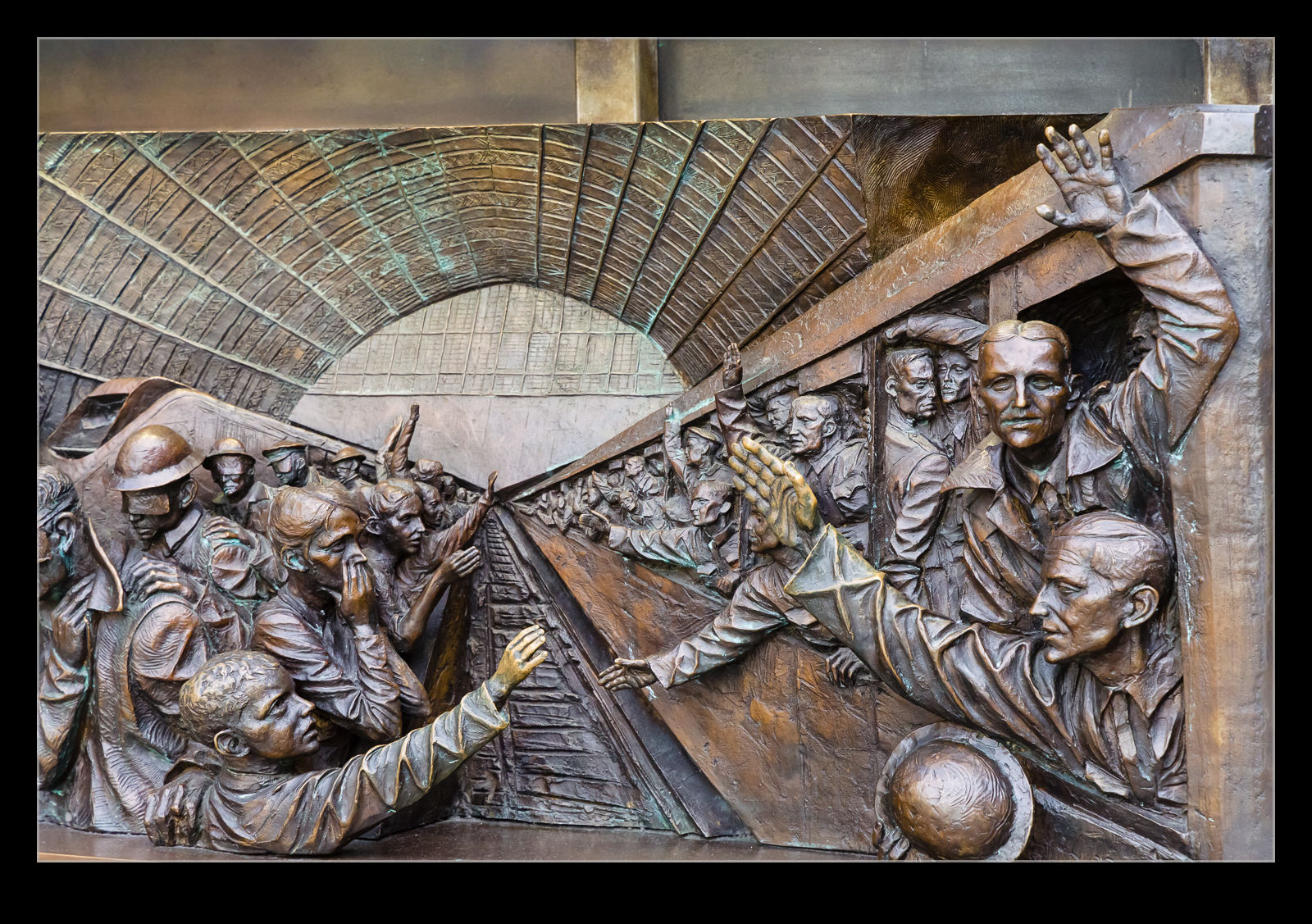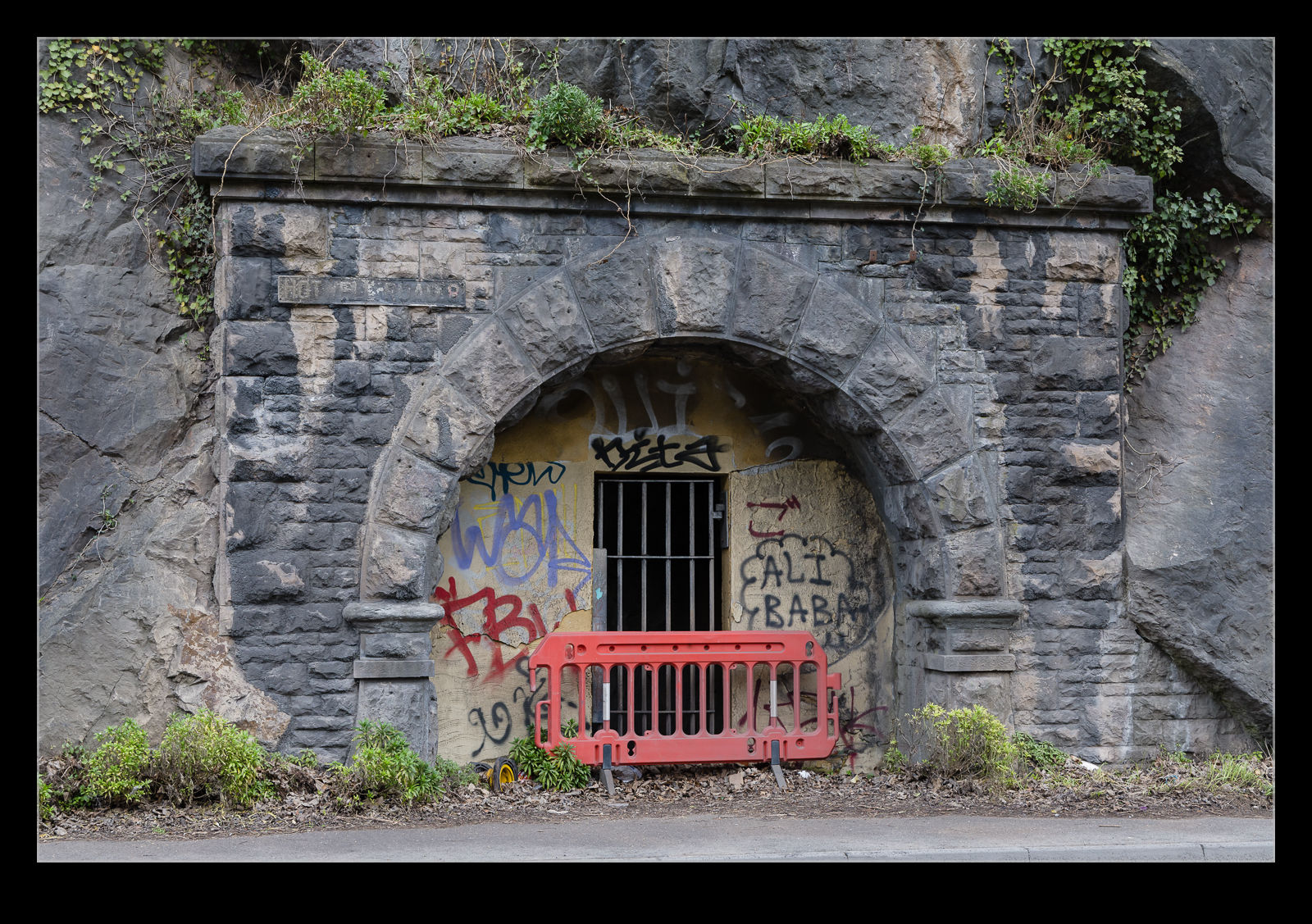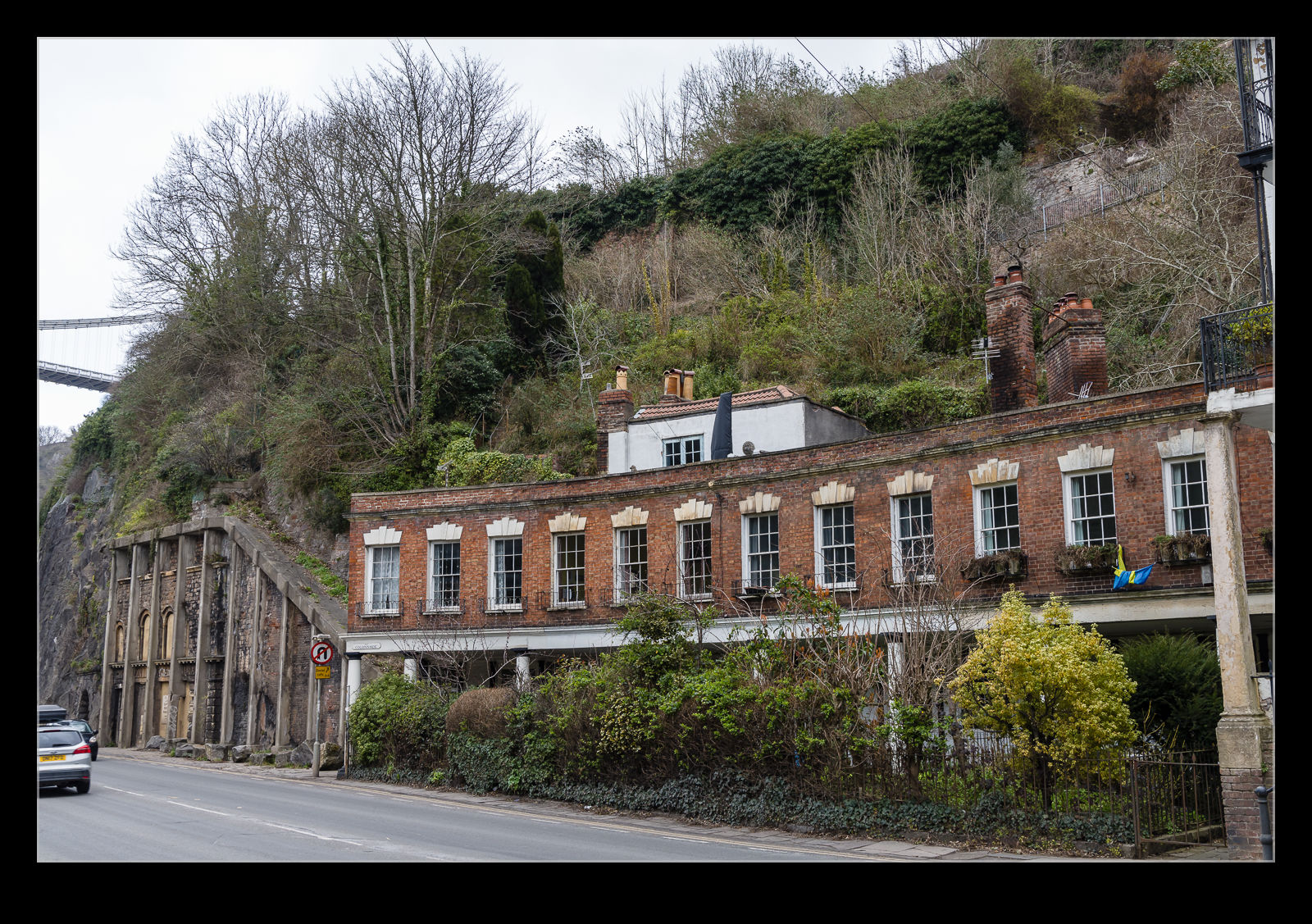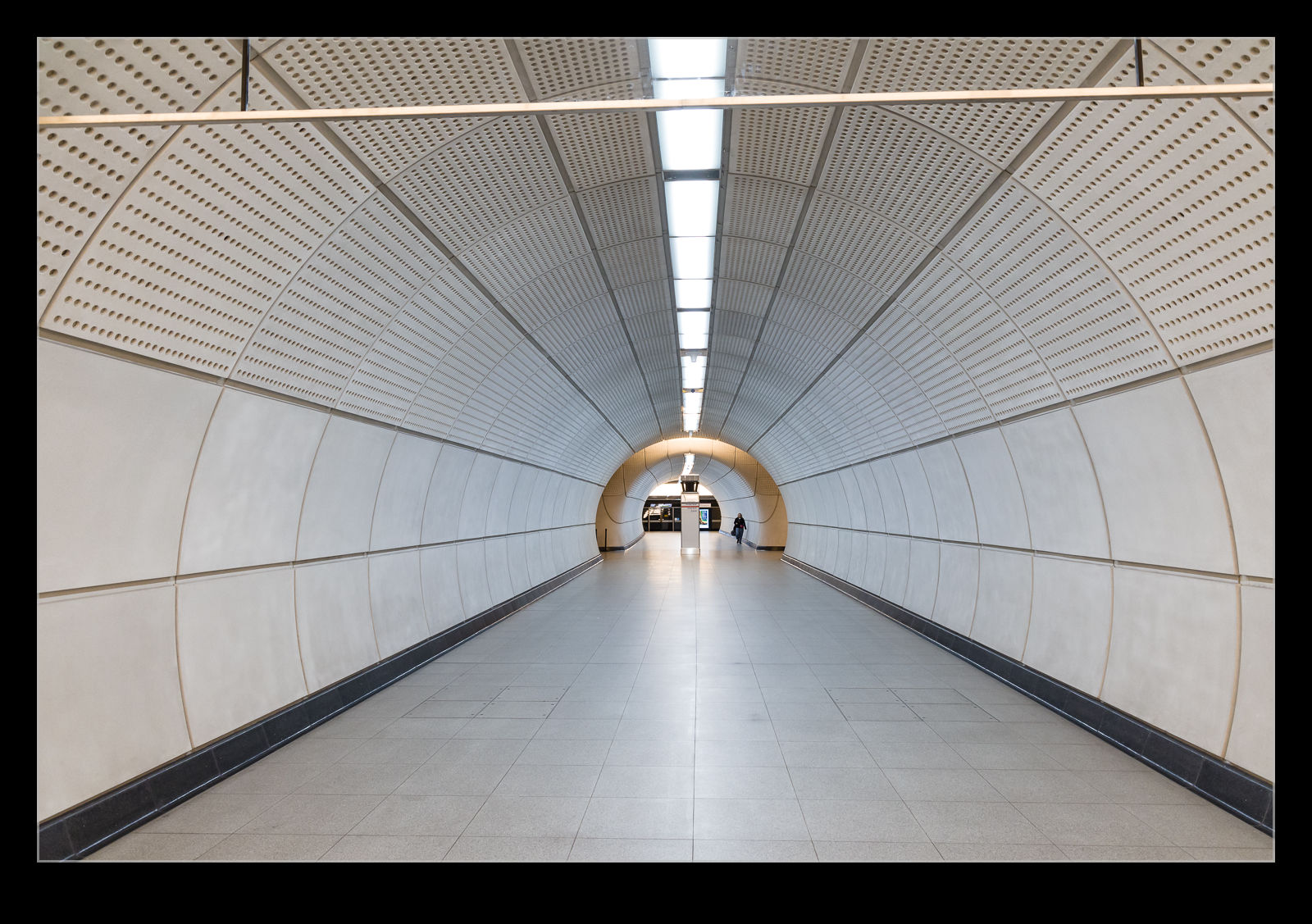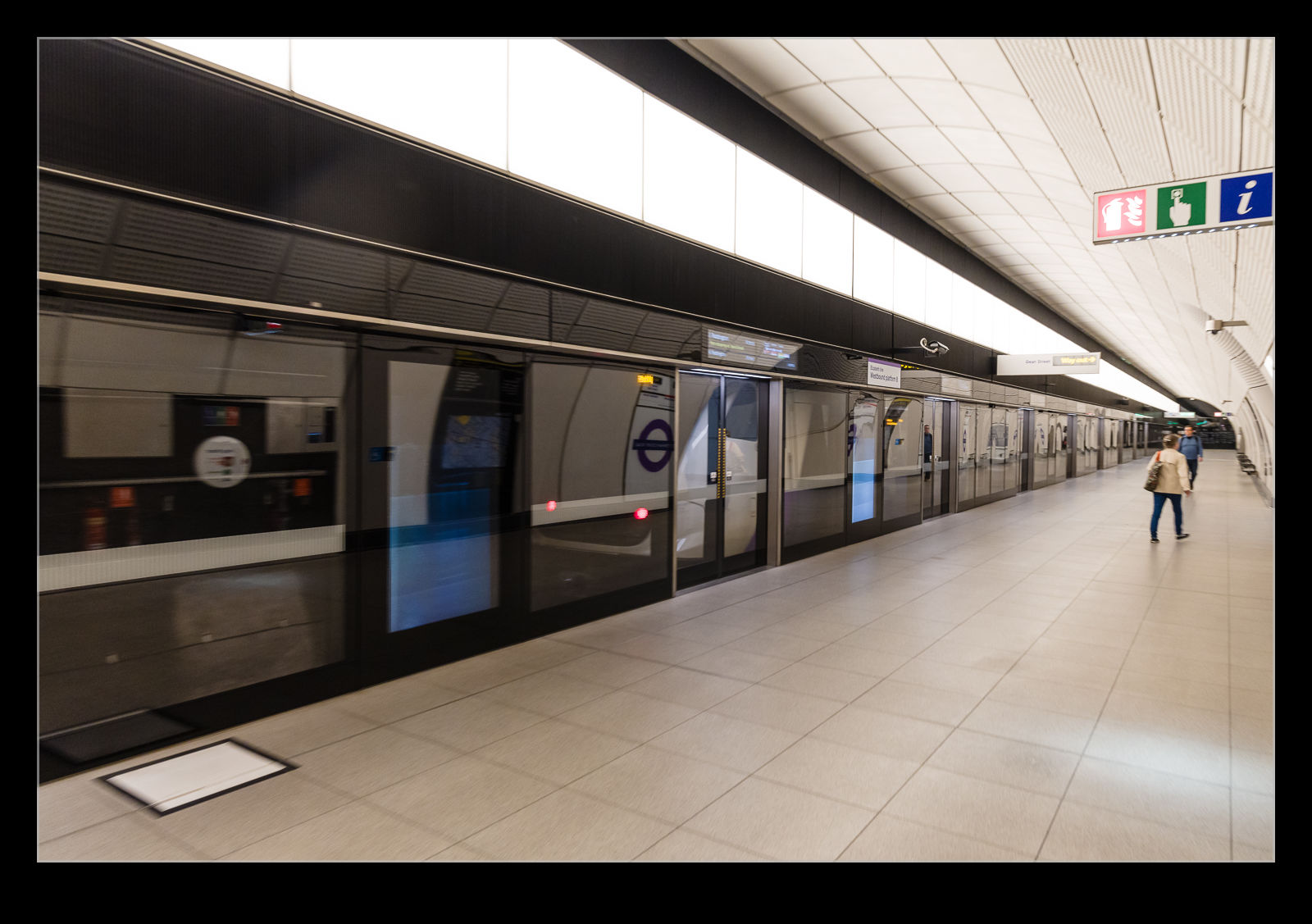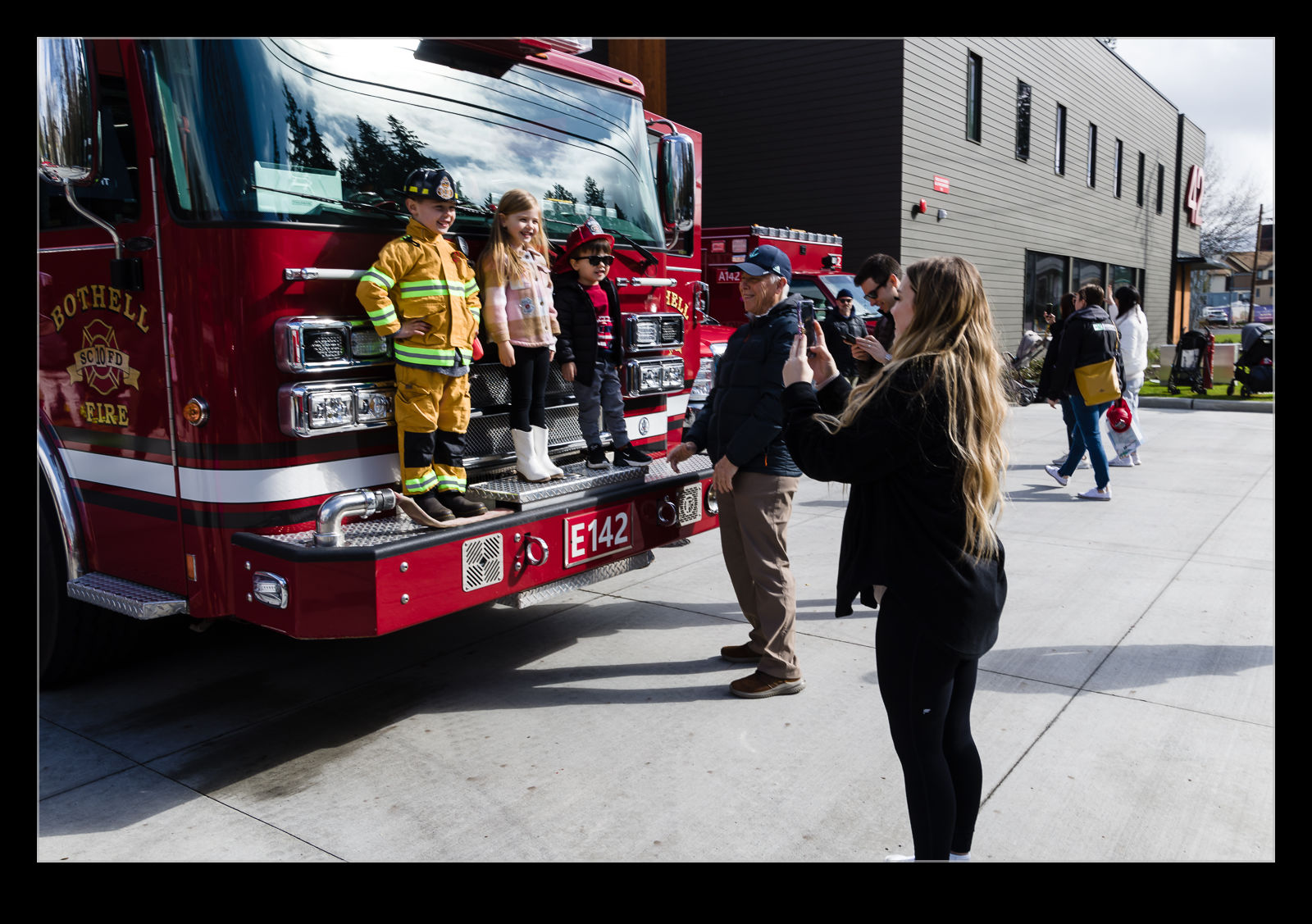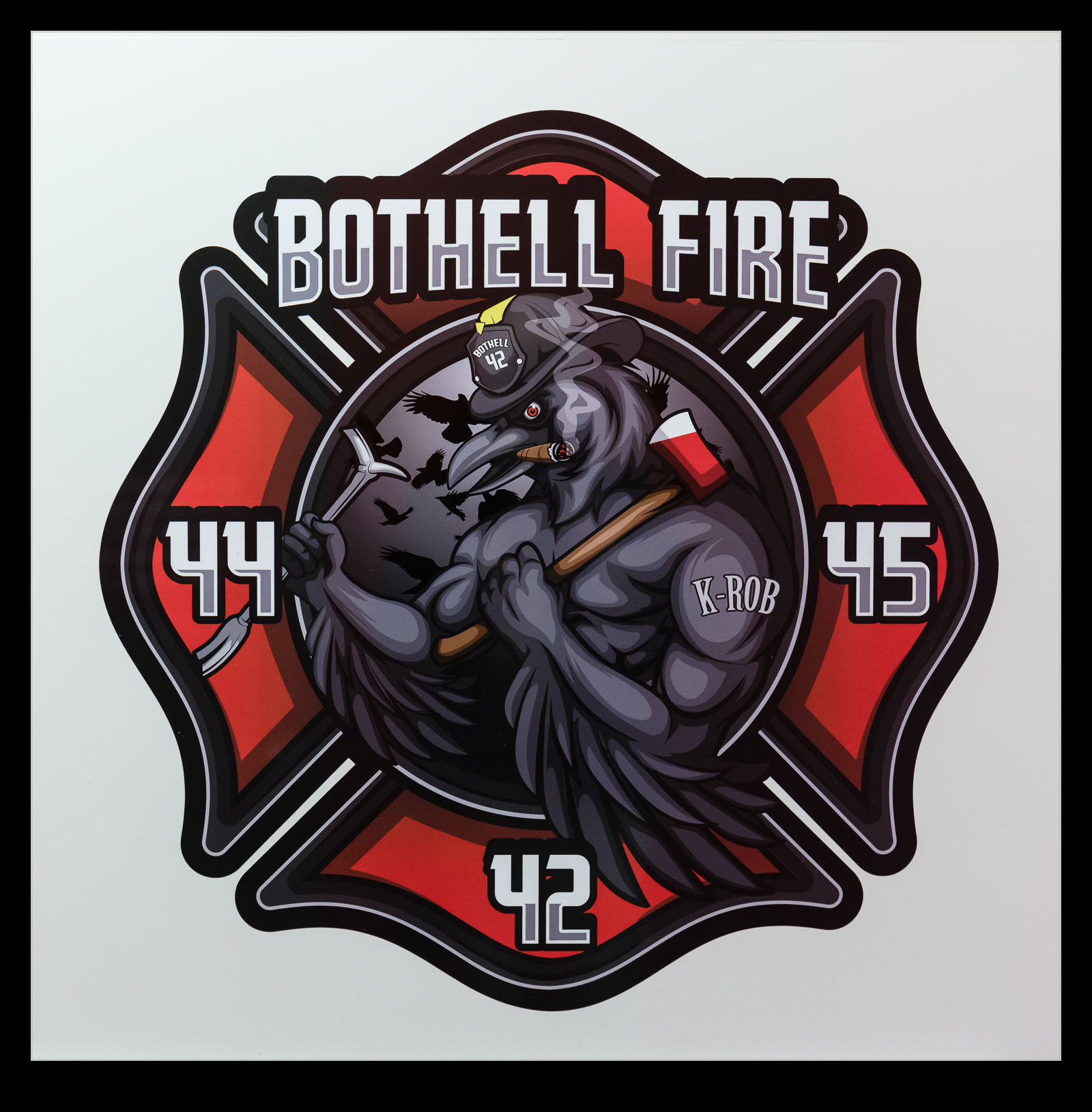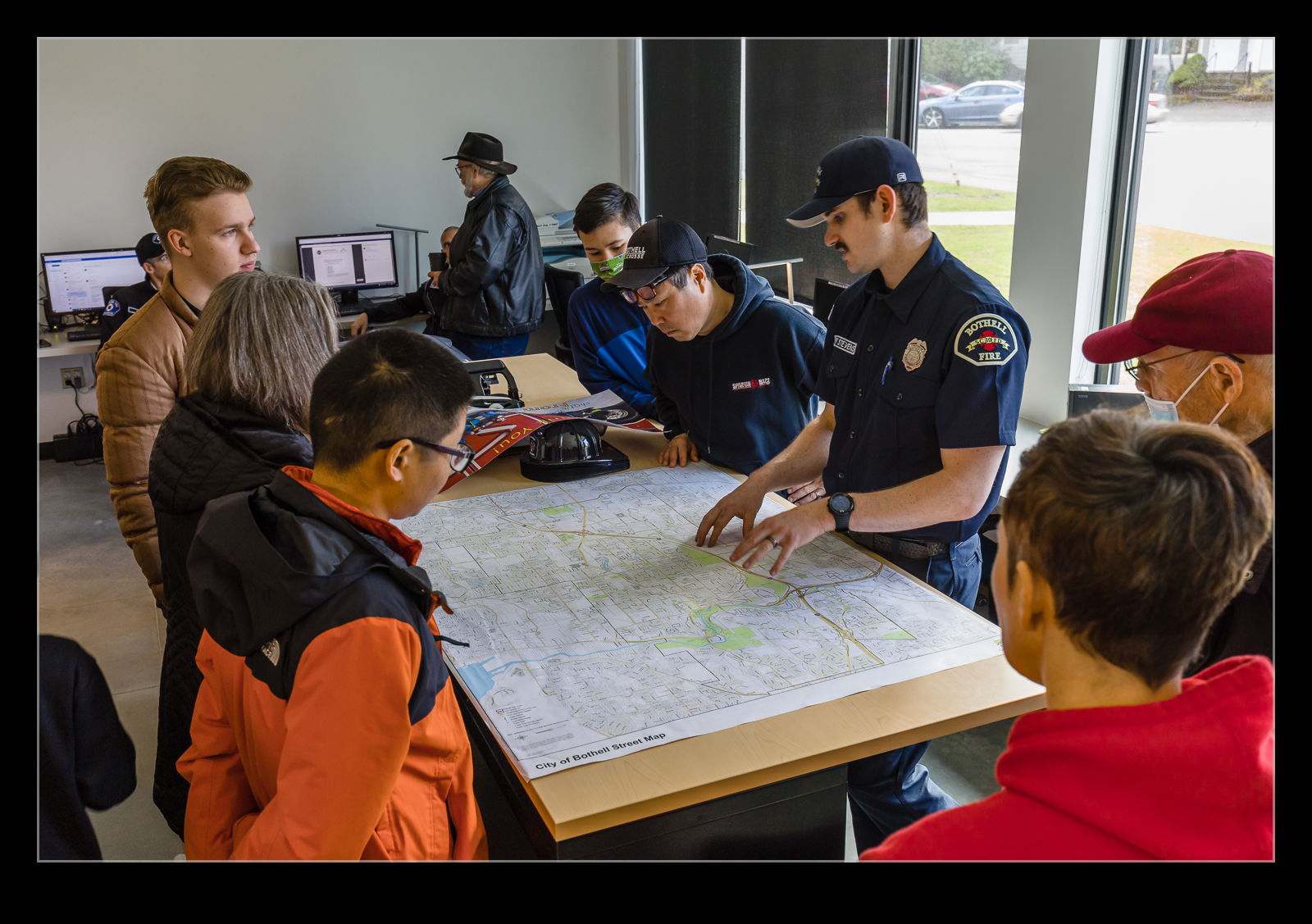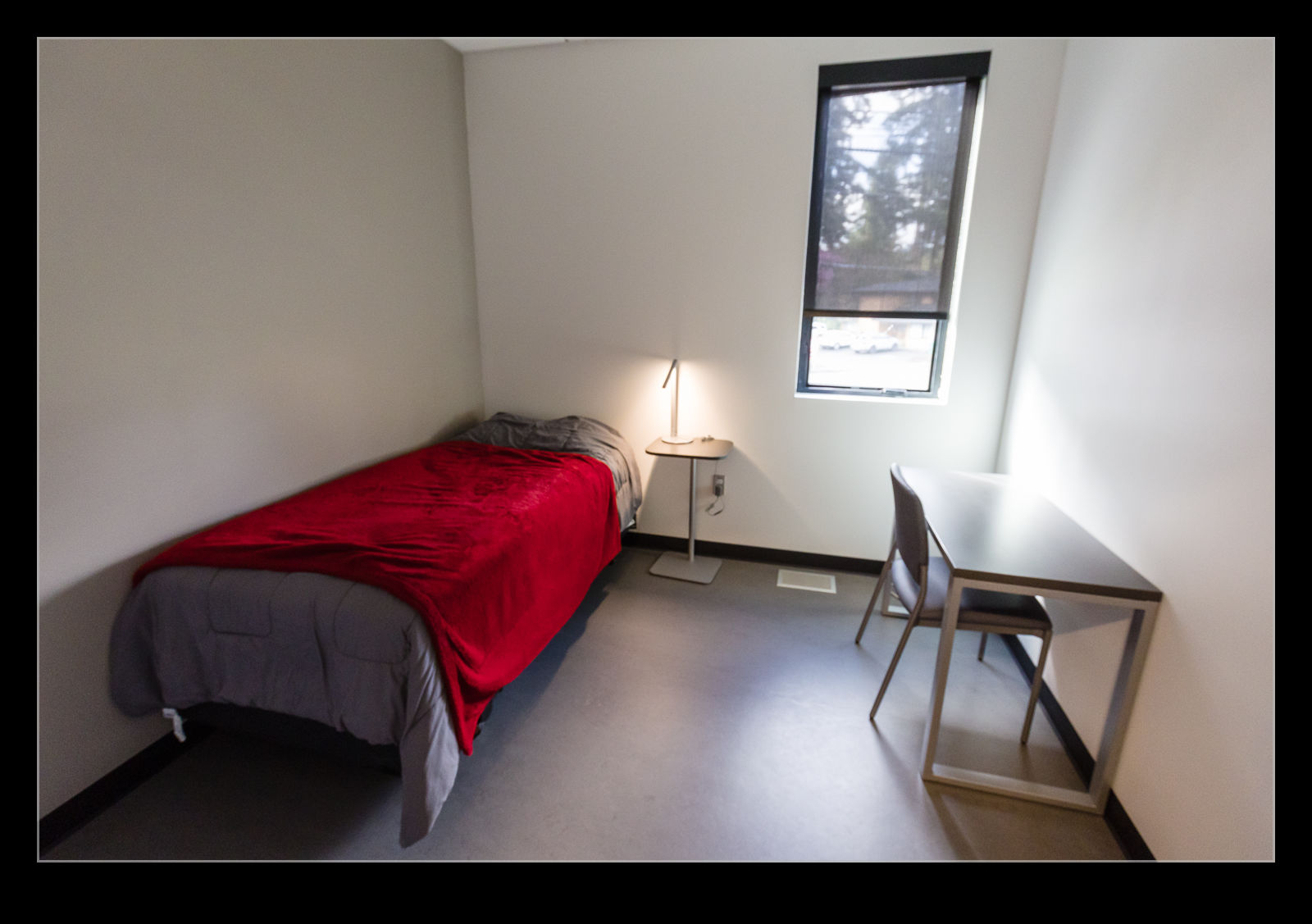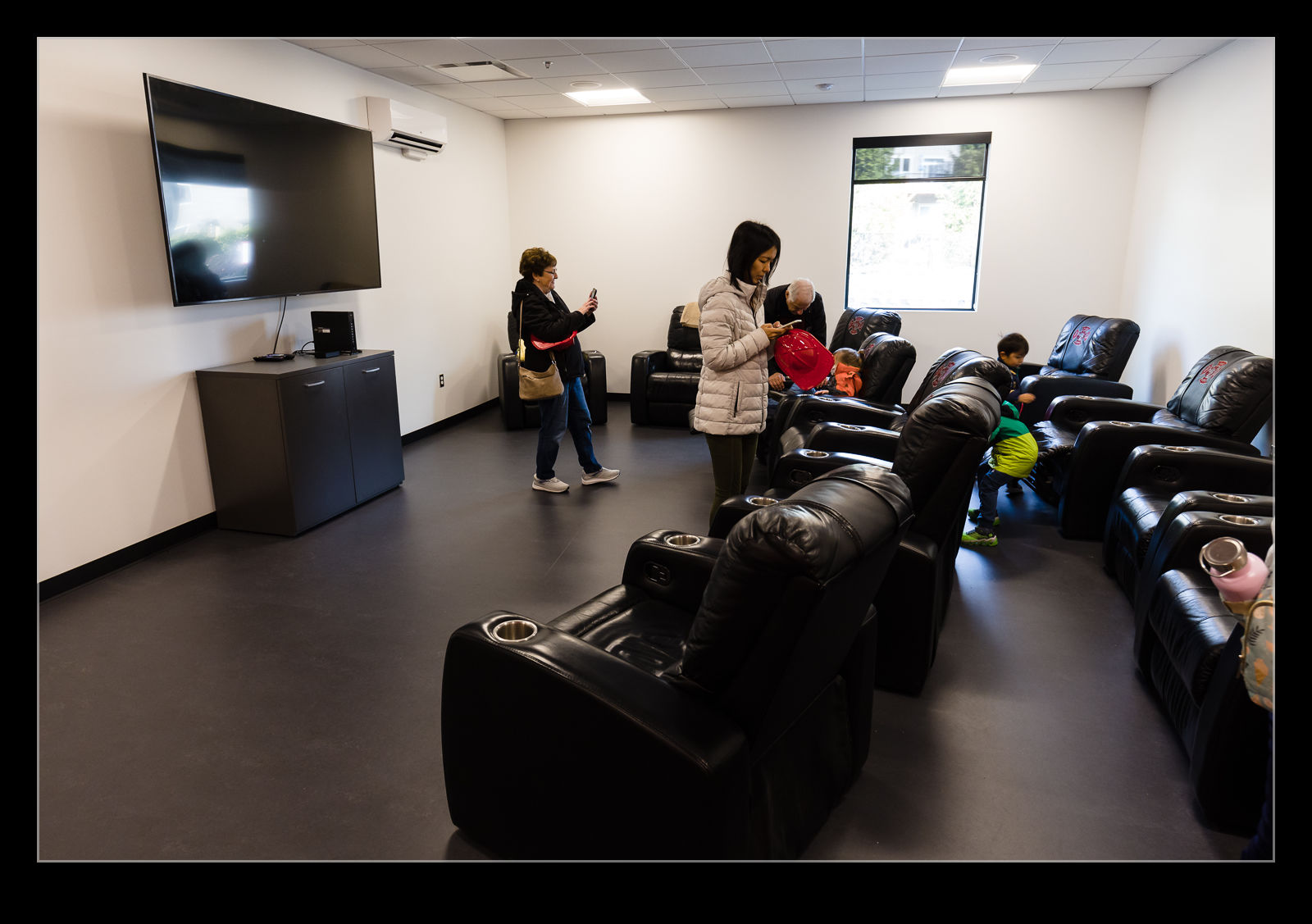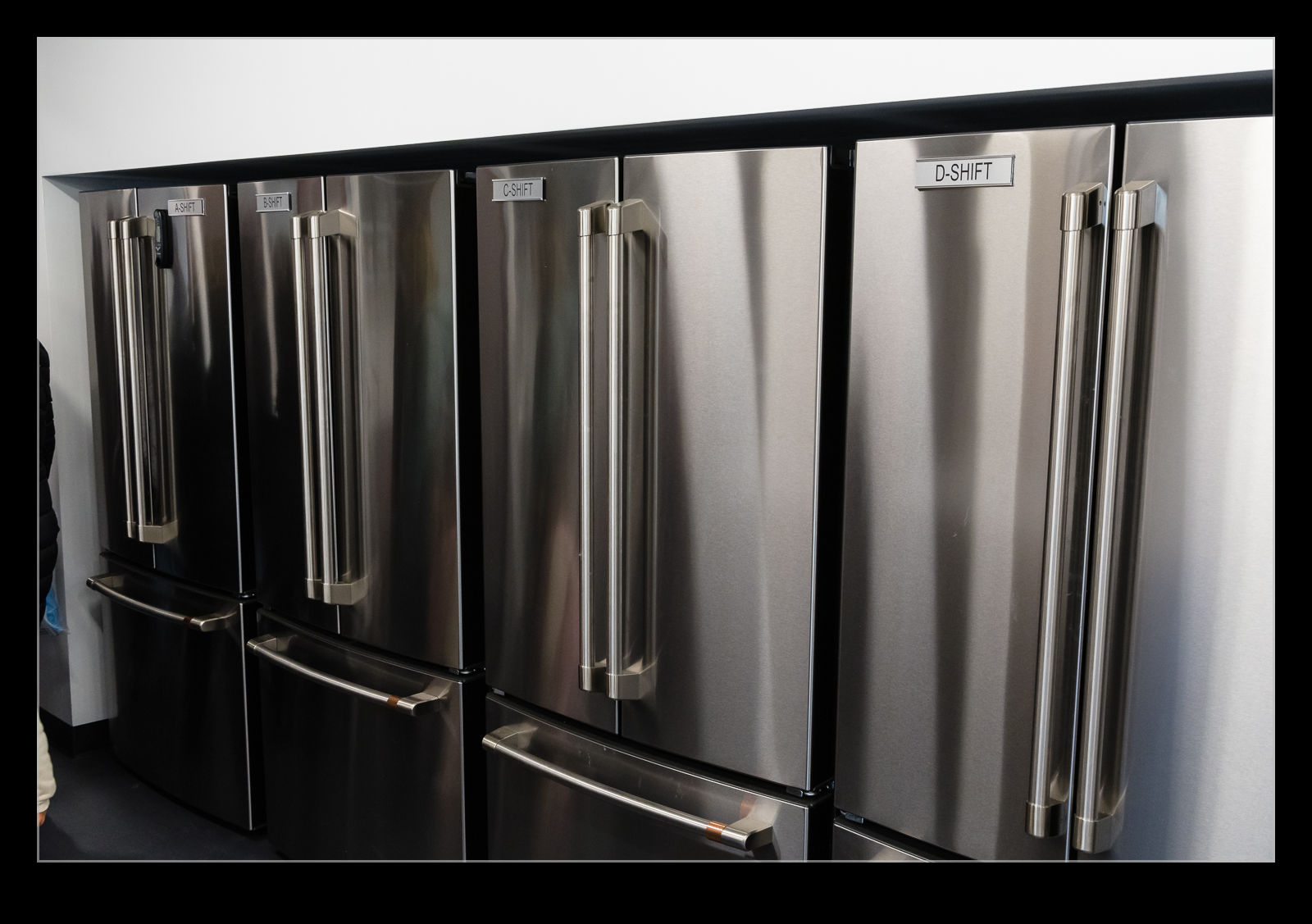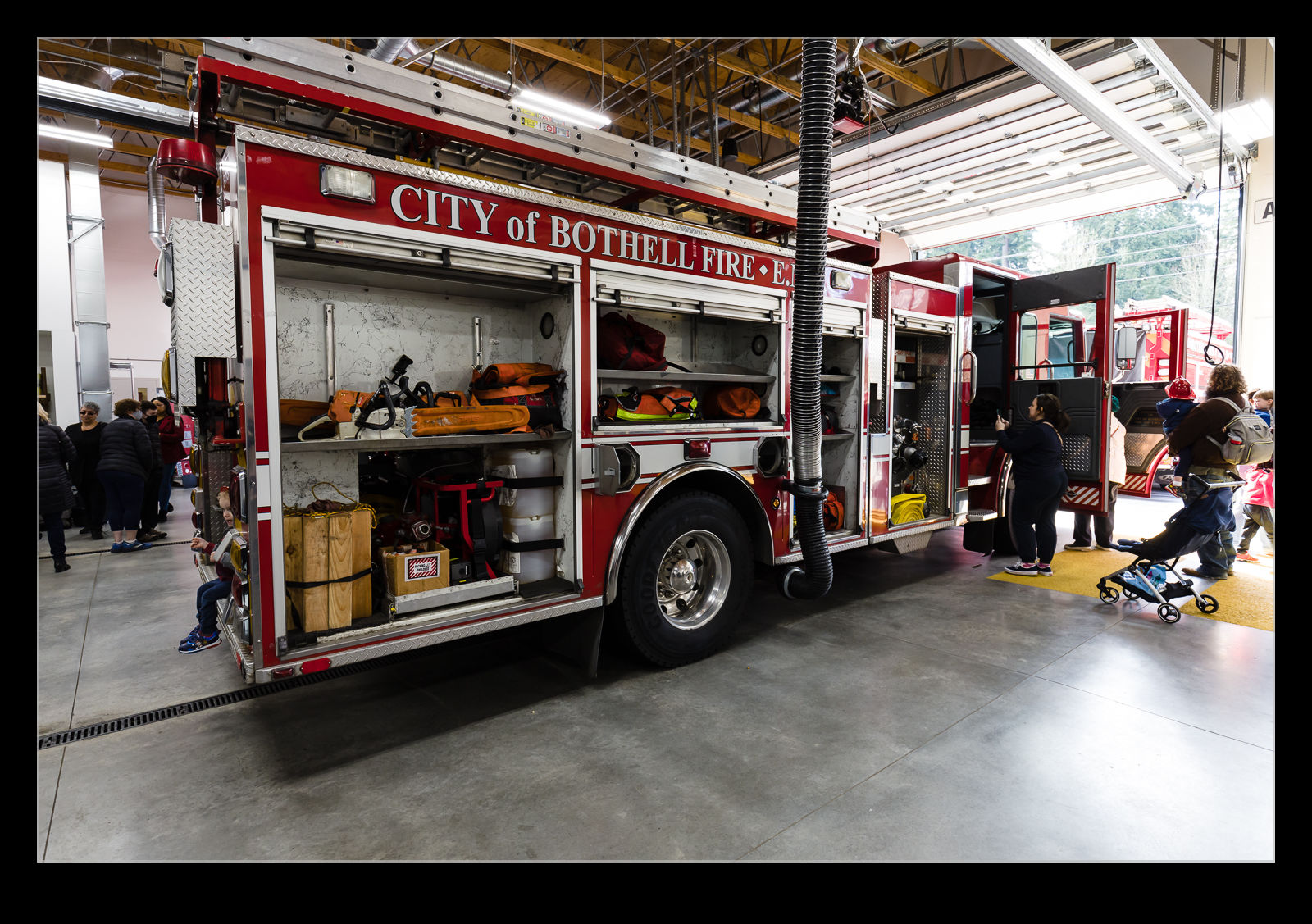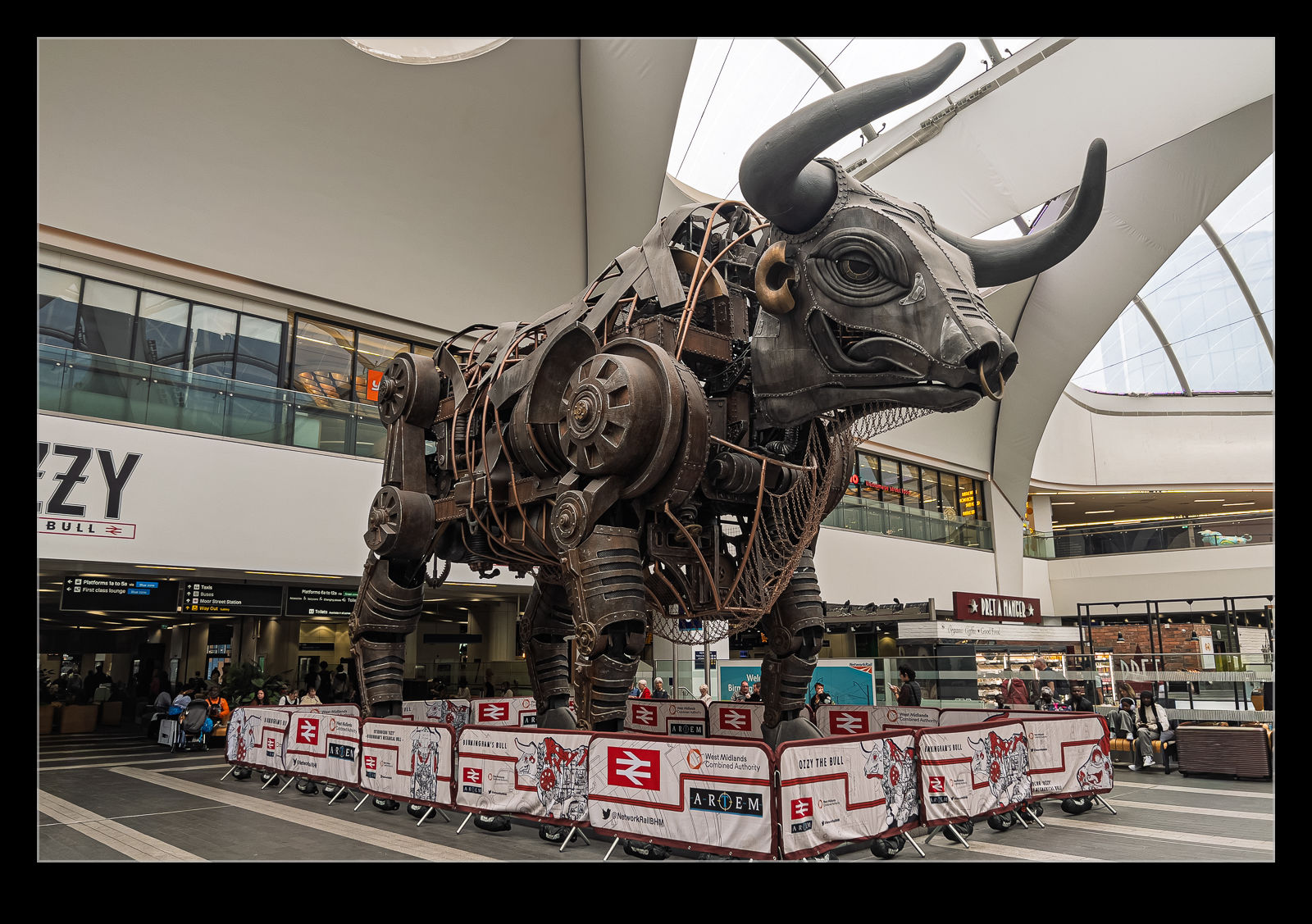 I travel through Birmingham New Street Station a lot these days. It is a connection for a bunch of my journeys and sometimes a destination in its own right. The station had a major rebuild a few years ago and one of the features in there now is Ozzie. Ozzie is a huge mechanical bull. It is such an imposing device and I do find it cheers me up. If you are ever heading that way, do find the time to check it out.
I travel through Birmingham New Street Station a lot these days. It is a connection for a bunch of my journeys and sometimes a destination in its own right. The station had a major rebuild a few years ago and one of the features in there now is Ozzie. Ozzie is a huge mechanical bull. It is such an imposing device and I do find it cheers me up. If you are ever heading that way, do find the time to check it out.
Tag Archives: Station
Severn Valley Railway at Kidderminster
 2025 is the 200th anniversary of the first passenger railways in the world and the UK is celebrating this throughout the year with the Rail200 events. Our company is supporting this at a few events including a weekend at the Severn Valley Railway in Kidderminster. I volunteered to take part in this event so spent a couple of days showing people around our hydrogen fuel cell demonstrator train. More of that in a separate post.
2025 is the 200th anniversary of the first passenger railways in the world and the UK is celebrating this throughout the year with the Rail200 events. Our company is supporting this at a few events including a weekend at the Severn Valley Railway in Kidderminster. I volunteered to take part in this event so spent a couple of days showing people around our hydrogen fuel cell demonstrator train. More of that in a separate post.
 The Severn Valley station is alongside the mainline station in Kidderminster. I guess you had to walk between the two stations when this line was still a part of the national system. The mainline station is a modern looking affair, but the Severn Valley’s station has a far more period feel to it. Here are some images of the station itself. It will come as no surprise to find out that I shall have more posts to come from the weekend before too long.
The Severn Valley station is alongside the mainline station in Kidderminster. I guess you had to walk between the two stations when this line was still a part of the national system. The mainline station is a modern looking affair, but the Severn Valley’s station has a far more period feel to it. Here are some images of the station itself. It will come as no surprise to find out that I shall have more posts to come from the weekend before too long.
Lyon Saint-Exupery Airport TGV Station
 I took the rail service from the heart of Lyon out to the airport. It dropped us off next to the TGV station from which it was a short(ish) walk to the terminal. (The sign doesn’t lie about how many minutes it is to get to the terminal, but it doesn’t highlight that the time is to the beginning of the terminal and the bits you want are quite a bit further on to walk!) Anyway, I digress. The TGV station itself is a really stunning piece of architecture. The curves and vaulted ceilings are really cool. There is a central atrium but then the wings that come out each side for the platform access are equally lovely. If you find yourself travelling through the airport and have a few minutes, do pay it a visit!
I took the rail service from the heart of Lyon out to the airport. It dropped us off next to the TGV station from which it was a short(ish) walk to the terminal. (The sign doesn’t lie about how many minutes it is to get to the terminal, but it doesn’t highlight that the time is to the beginning of the terminal and the bits you want are quite a bit further on to walk!) Anyway, I digress. The TGV station itself is a really stunning piece of architecture. The curves and vaulted ceilings are really cool. There is a central atrium but then the wings that come out each side for the platform access are equally lovely. If you find yourself travelling through the airport and have a few minutes, do pay it a visit!
Disused Platforms
 I was walking back into Crewe Station on my way home after a work visit. Crewe was a major part of the UK rail industry at its peak and it still has many rail businesses. The station is sized for the significance that it once held. There are plenty of platforms. What I hadn’t noticed before is that there used to be more. As I approached the station, I saw these extra platforms that are now disused. Standing on what would be track level looking up at them, I wondered what things might have looked like when they were in use and things were really buzzing at this station.
I was walking back into Crewe Station on my way home after a work visit. Crewe was a major part of the UK rail industry at its peak and it still has many rail businesses. The station is sized for the significance that it once held. There are plenty of platforms. What I hadn’t noticed before is that there used to be more. As I approached the station, I saw these extra platforms that are now disused. Standing on what would be track level looking up at them, I wondered what things might have looked like when they were in use and things were really buzzing at this station.
Metalwork Used to be More Complex
 One of the cool features of older large stations in the UK is that their original owners were into making statements with the architecture. Consequently, you end up with some gran roof structures – not least to allow a number of tracks to be covered to keep the travelling public dry – it does rain in the UK occasionally. In the Victoria era, they would make sure every detail was taken care of. The cast iron pillars on which everything was built would not just be functional. They would let you know who built it. I loved the ironwork detail on this part of the station in York. The North Eastern Railway may have been superseded by many other companies, but they are still remembered here.
One of the cool features of older large stations in the UK is that their original owners were into making statements with the architecture. Consequently, you end up with some gran roof structures – not least to allow a number of tracks to be covered to keep the travelling public dry – it does rain in the UK occasionally. In the Victoria era, they would make sure every detail was taken care of. The cast iron pillars on which everything was built would not just be functional. They would let you know who built it. I loved the ironwork detail on this part of the station in York. The North Eastern Railway may have been superseded by many other companies, but they are still remembered here.
Old Power Station Buildings (Still in Use)
 The falls in Spokane are a perfect spot for a hydro power station and there are two rather than one. The first provided power for the developing town and a second was needed as the demand increased. The larger building is lower down and is a most impressive brick structure. It has an imposing look to it. The upper station is a lot less dramatic. A pale concrete structure but it has some architectural features to it, so it is not totally innocuous. Both of them are still providing power to the region and I imagine will for a long time to come.
The falls in Spokane are a perfect spot for a hydro power station and there are two rather than one. The first provided power for the developing town and a second was needed as the demand increased. The larger building is lower down and is a most impressive brick structure. It has an imposing look to it. The upper station is a lot less dramatic. A pale concrete structure but it has some architectural features to it, so it is not totally innocuous. Both of them are still providing power to the region and I imagine will for a long time to come.
St Pancras Sculptures
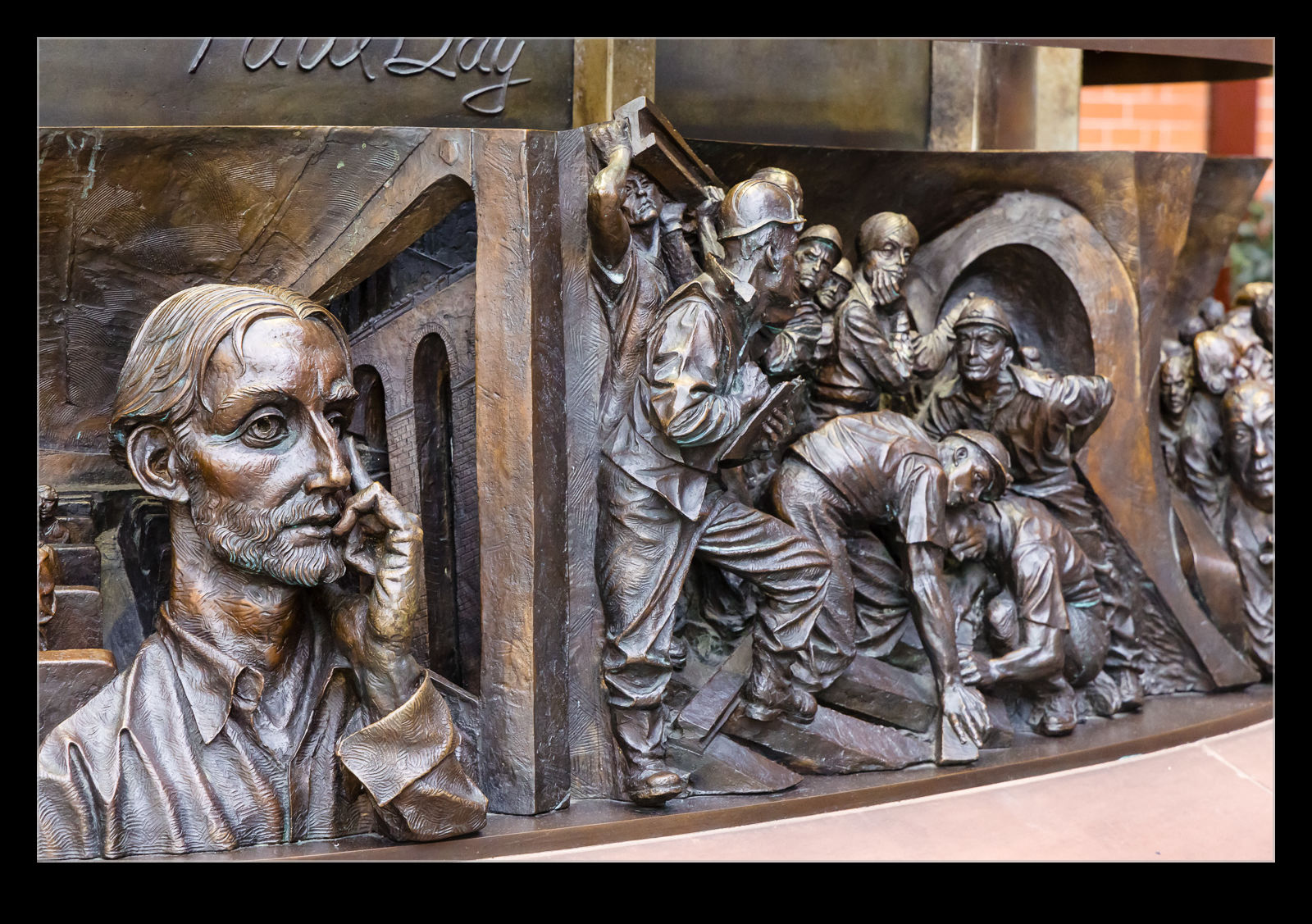 While walking through the station at St Pancras, I realized that there are more sculptures than I had thought. The one of Sir John Betjeman I knew of from previous visits, but the others were new to me. I rather like the stark nature of their textures and imagery. They have a rather aggressive feel to me which got my attention. It’s nice that public spaces make the effort to add art to the functional areas.
While walking through the station at St Pancras, I realized that there are more sculptures than I had thought. The one of Sir John Betjeman I knew of from previous visits, but the others were new to me. I rather like the stark nature of their textures and imagery. They have a rather aggressive feel to me which got my attention. It’s nice that public spaces make the effort to add art to the functional areas.
Clifton Rocks Railway
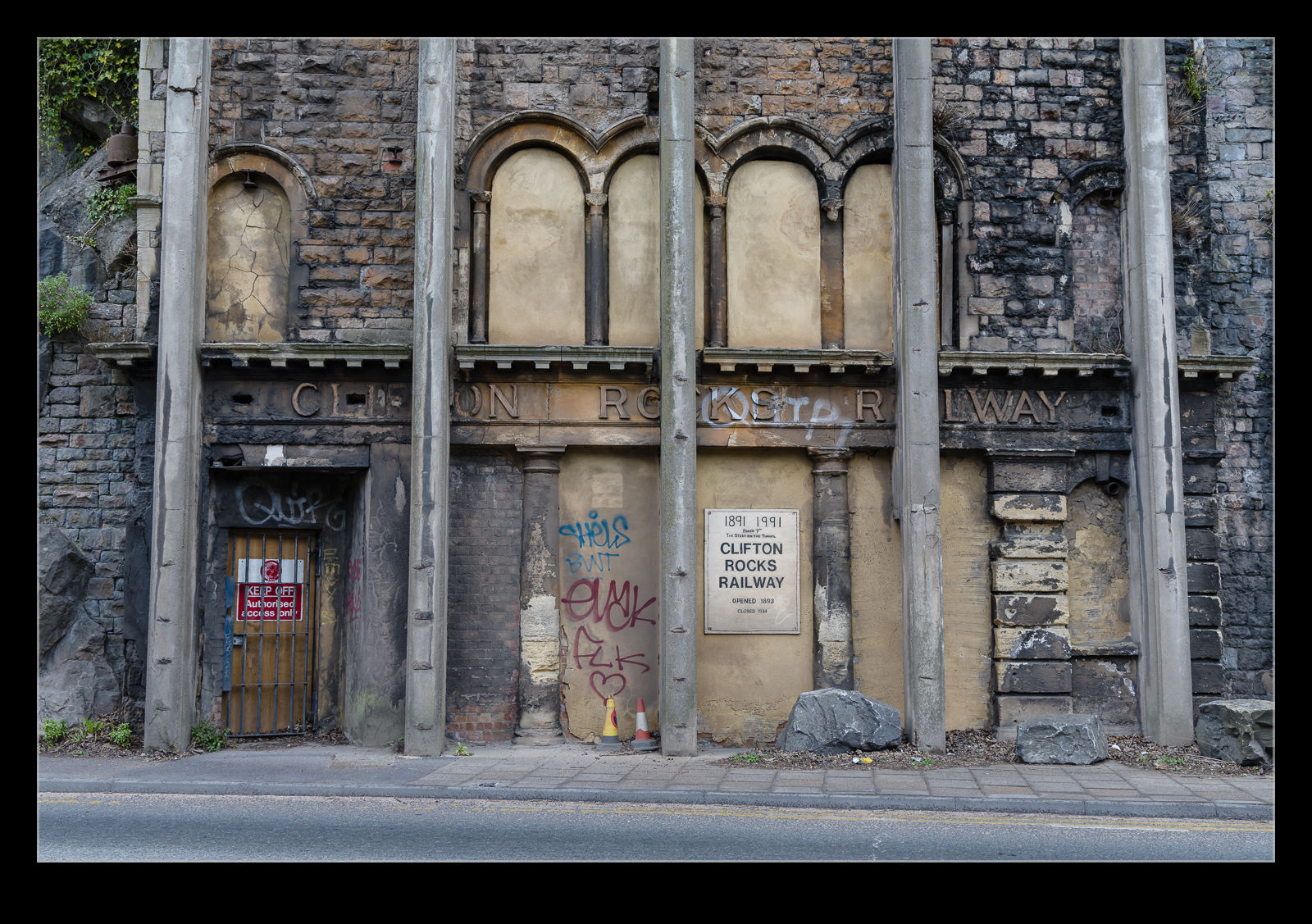 The area of Bristol known as Clifton sits on the top of the hill overlooking the Avon. To get from the water to Clifton is quite a climb. These days you would drive up there but, in the days, when vessels would be bringing passengers in by boat along the river, an alternative was required. The Clifton Rocks Railway was the solution. This was a funicular railway that ran in a tunnel from alongside the river up to near the suspension bridge.
The area of Bristol known as Clifton sits on the top of the hill overlooking the Avon. To get from the water to Clifton is quite a climb. These days you would drive up there but, in the days, when vessels would be bringing passengers in by boat along the river, an alternative was required. The Clifton Rocks Railway was the solution. This was a funicular railway that ran in a tunnel from alongside the river up to near the suspension bridge.
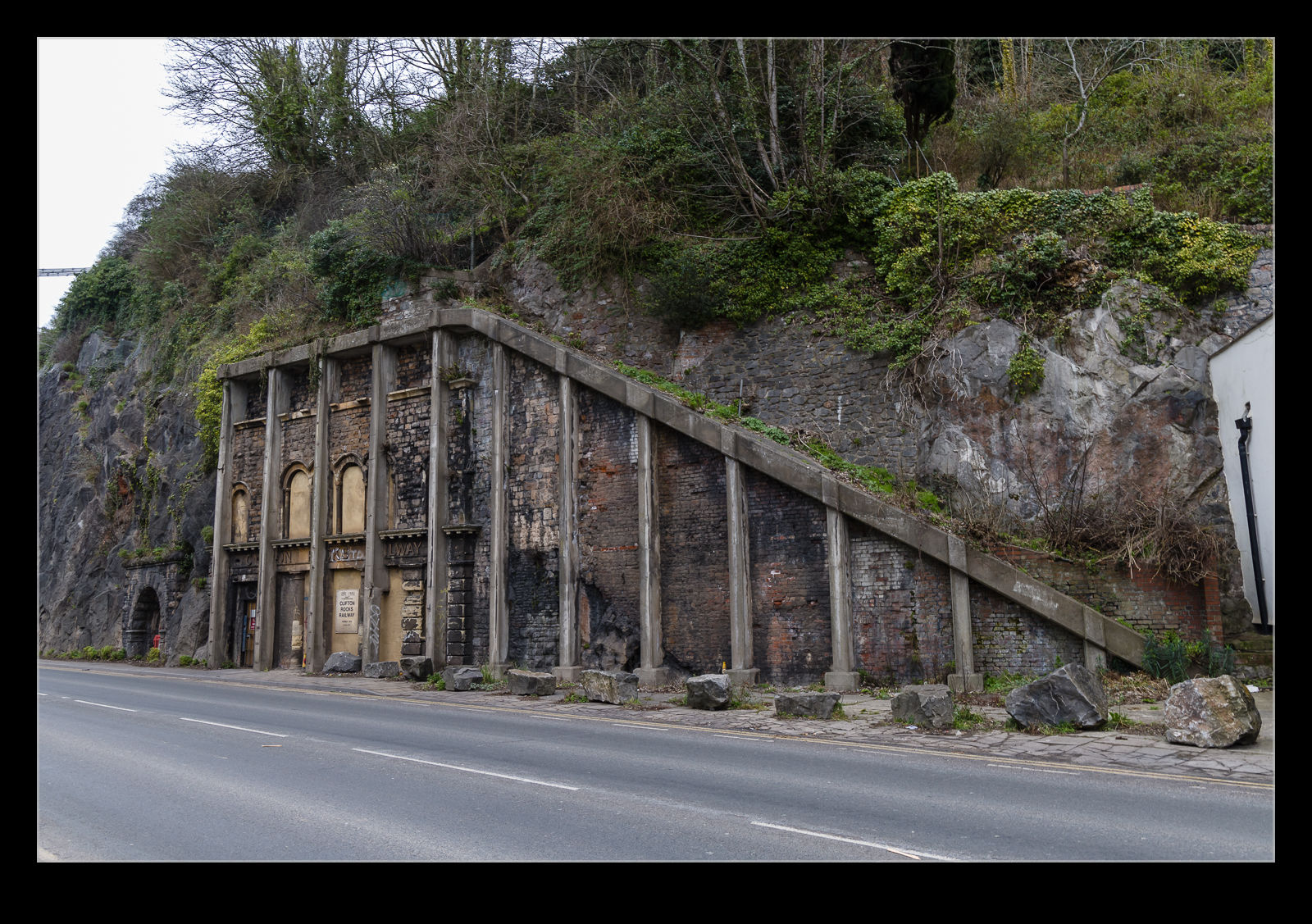 Built in the 1890s, it operated until the 1930s when the decline in passenger numbers meant it was no longer viable. The tunnels were used as office space during the Second World War with the BBC being one of the tenants and they continued to use the space into the 1960s. There is now an effort to restore aspects of the tunnels although the railway will never operate again given the usage the tunnels have had since service ended. The station at the bottom is still visible but is now alongside a busy roadway so might easily be missed as you drive past.
Built in the 1890s, it operated until the 1930s when the decline in passenger numbers meant it was no longer viable. The tunnels were used as office space during the Second World War with the BBC being one of the tenants and they continued to use the space into the 1960s. There is now an effort to restore aspects of the tunnels although the railway will never operate again given the usage the tunnels have had since service ended. The station at the bottom is still visible but is now alongside a busy roadway so might easily be missed as you drive past.
Elizabeth Line Station
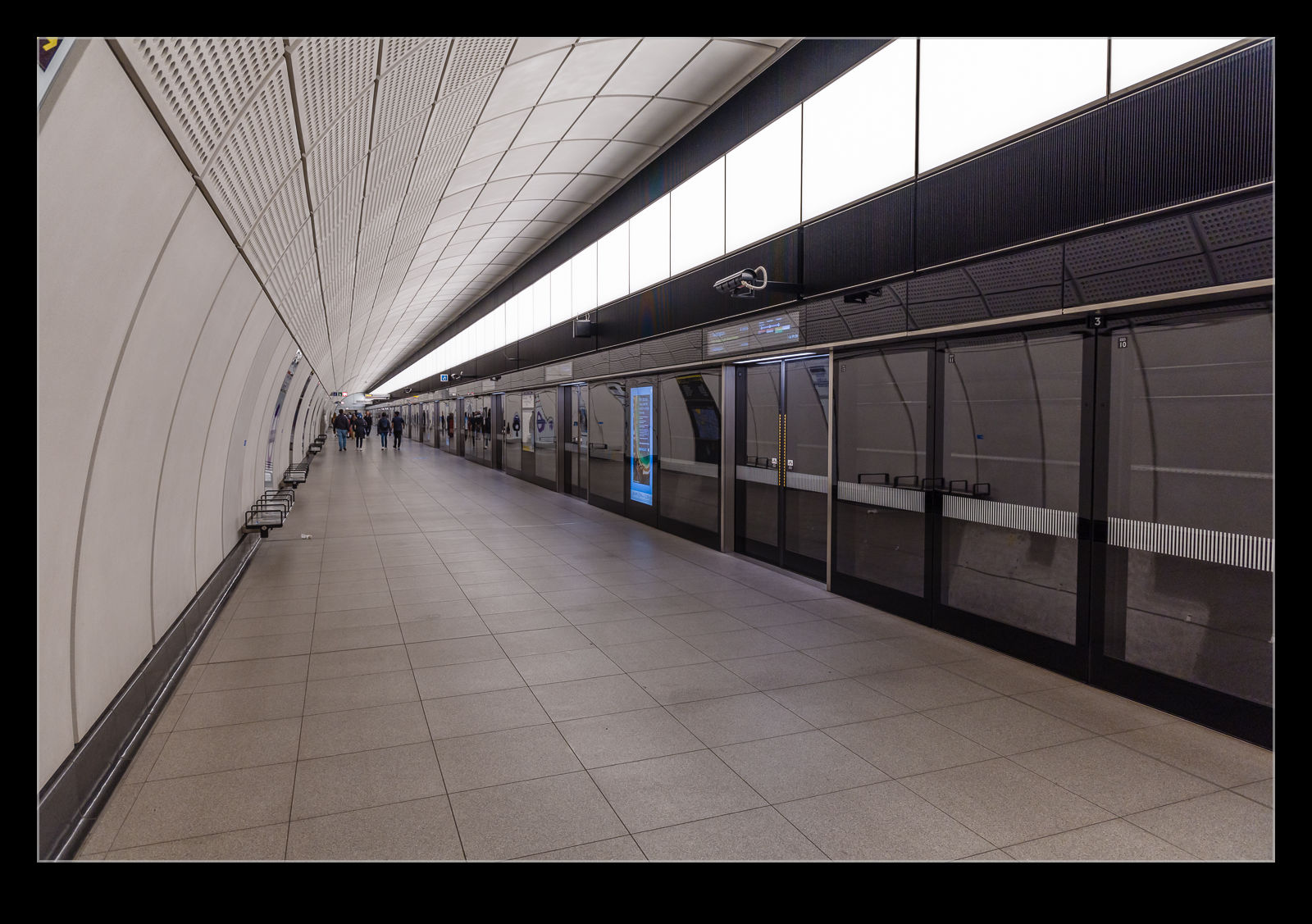 Last year, while we were staying in London, I got to take my first trip on the Elizabeth Line or what was known for a long time as Crossrail. This is a major addition to the transportation network of the town and appears to have been very successful. I only took one trip through the core of town and one to the airport. It was a very quick way to cover a journey that previously was a lot more drawn out. However, the thing that impressed me most was the stations. They are huge. The trains are long from the start, but they have built capacity to have them longer and the platforms are about 250m long as a result. You need to know which end to get out to make sure you don’t find yourself several blocks from where you intended when you get to the surface.
Last year, while we were staying in London, I got to take my first trip on the Elizabeth Line or what was known for a long time as Crossrail. This is a major addition to the transportation network of the town and appears to have been very successful. I only took one trip through the core of town and one to the airport. It was a very quick way to cover a journey that previously was a lot more drawn out. However, the thing that impressed me most was the stations. They are huge. The trains are long from the start, but they have built capacity to have them longer and the platforms are about 250m long as a result. You need to know which end to get out to make sure you don’t find yourself several blocks from where you intended when you get to the surface.
Bothell’s New Fire Station
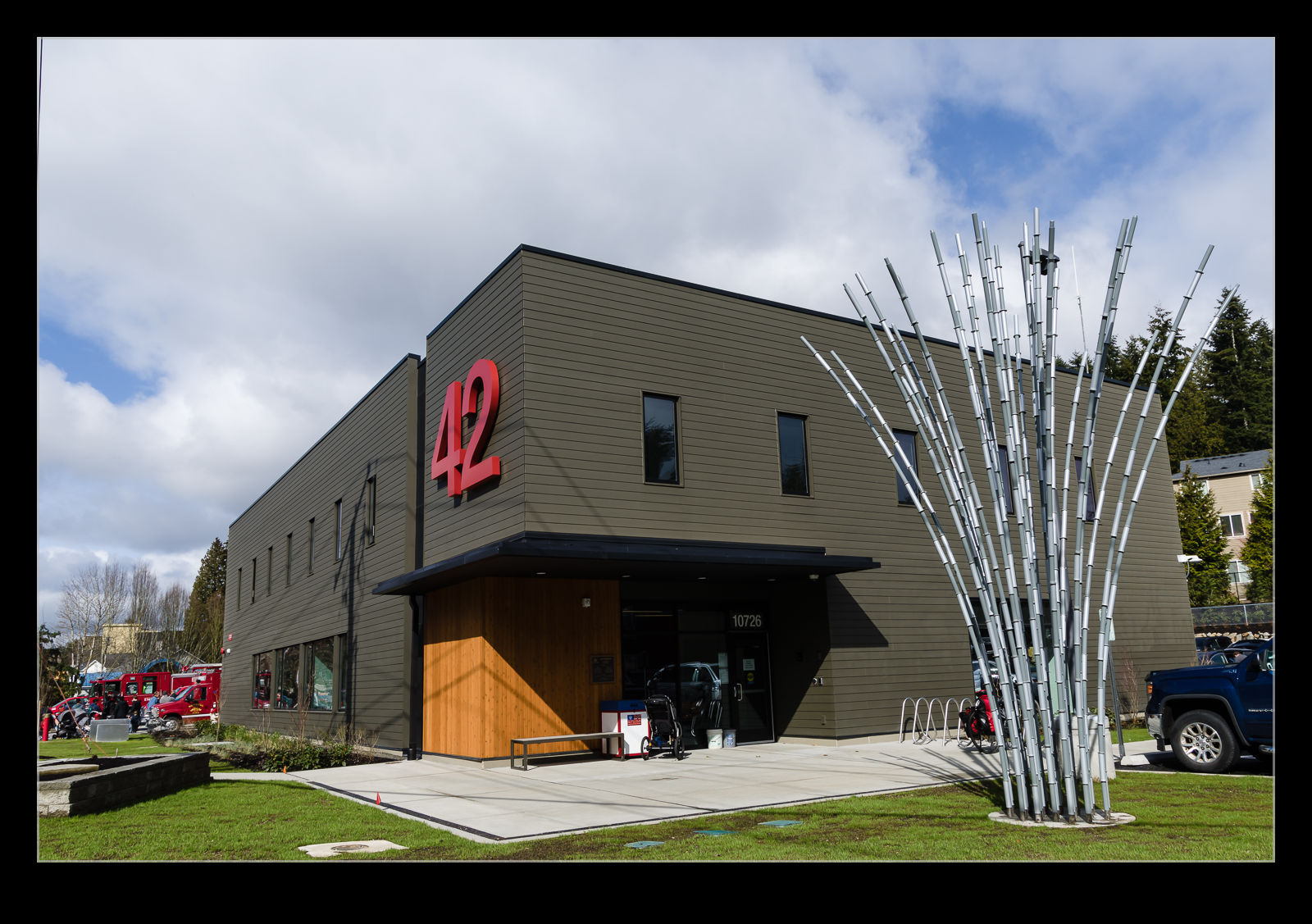 One of the routes that I take when riding my bike takes me through the center of Bothell – a town next to ours. I would ride past the old fire station but hadn’t been on the route for a while. There had been a sign saying a new fire station was going to be built and, when I recently rode by, not only was it finished but there was a sign outside saying that they were planning to have an open house to celebrate the opening. I figured this might be interesting.
One of the routes that I take when riding my bike takes me through the center of Bothell – a town next to ours. I would ride past the old fire station but hadn’t been on the route for a while. There had been a sign saying a new fire station was going to be built and, when I recently rode by, not only was it finished but there was a sign outside saying that they were planning to have an open house to celebrate the opening. I figured this might be interesting.
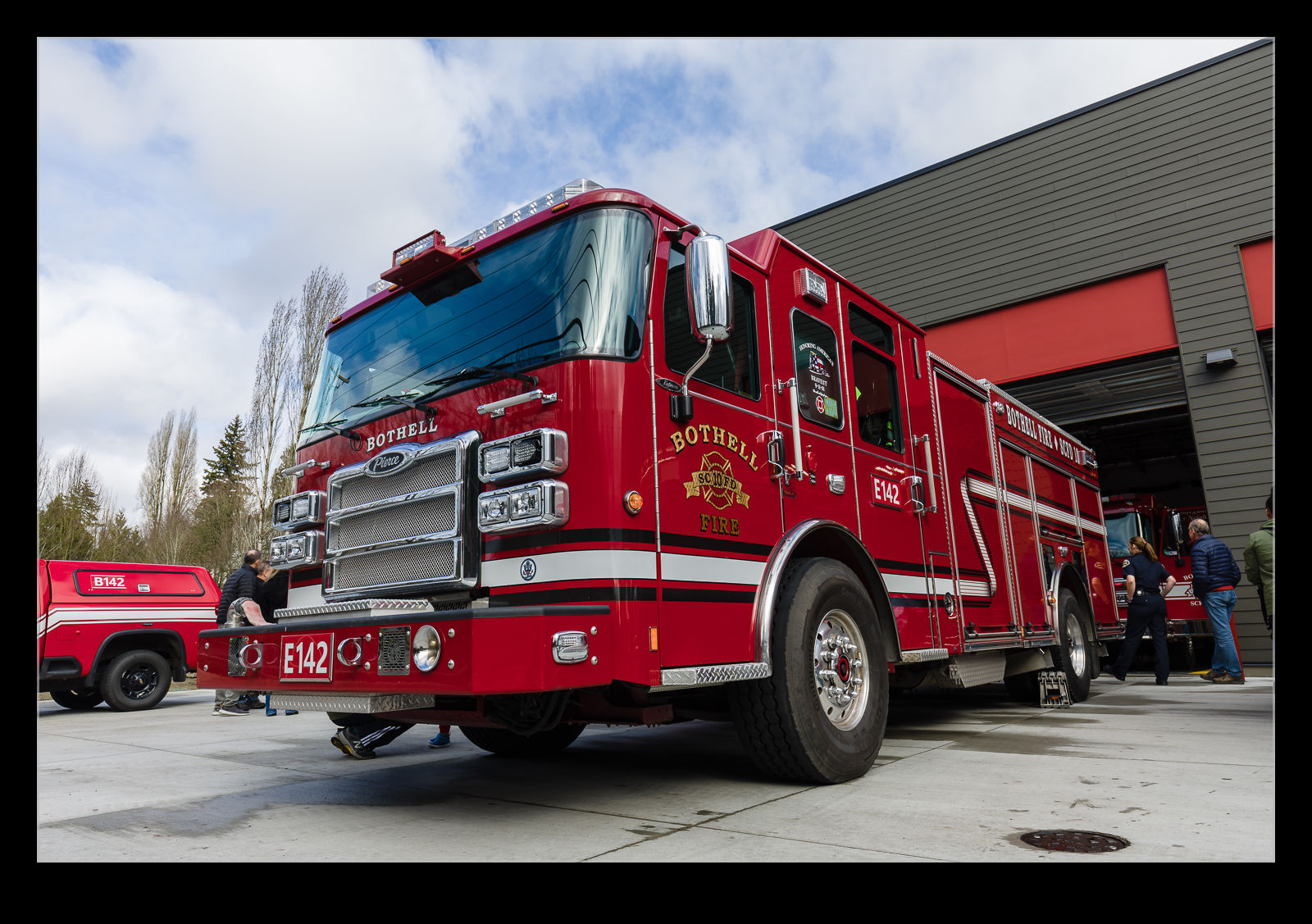 The open house was scheduled for a Saturday morning so was not going to be a long event but that didn’t deter people from showing up. There were plenty of people there when I arrived – indeed some were already leaving having got there earlier. As I stayed around, it got a lot busier. So many people came to have a look around. Many of them brought their kids along to see the station but I suspect the kids were less interested than the parents were.
The open house was scheduled for a Saturday morning so was not going to be a long event but that didn’t deter people from showing up. There were plenty of people there when I arrived – indeed some were already leaving having got there earlier. As I stayed around, it got a lot busier. So many people came to have a look around. Many of them brought their kids along to see the station but I suspect the kids were less interested than the parents were.
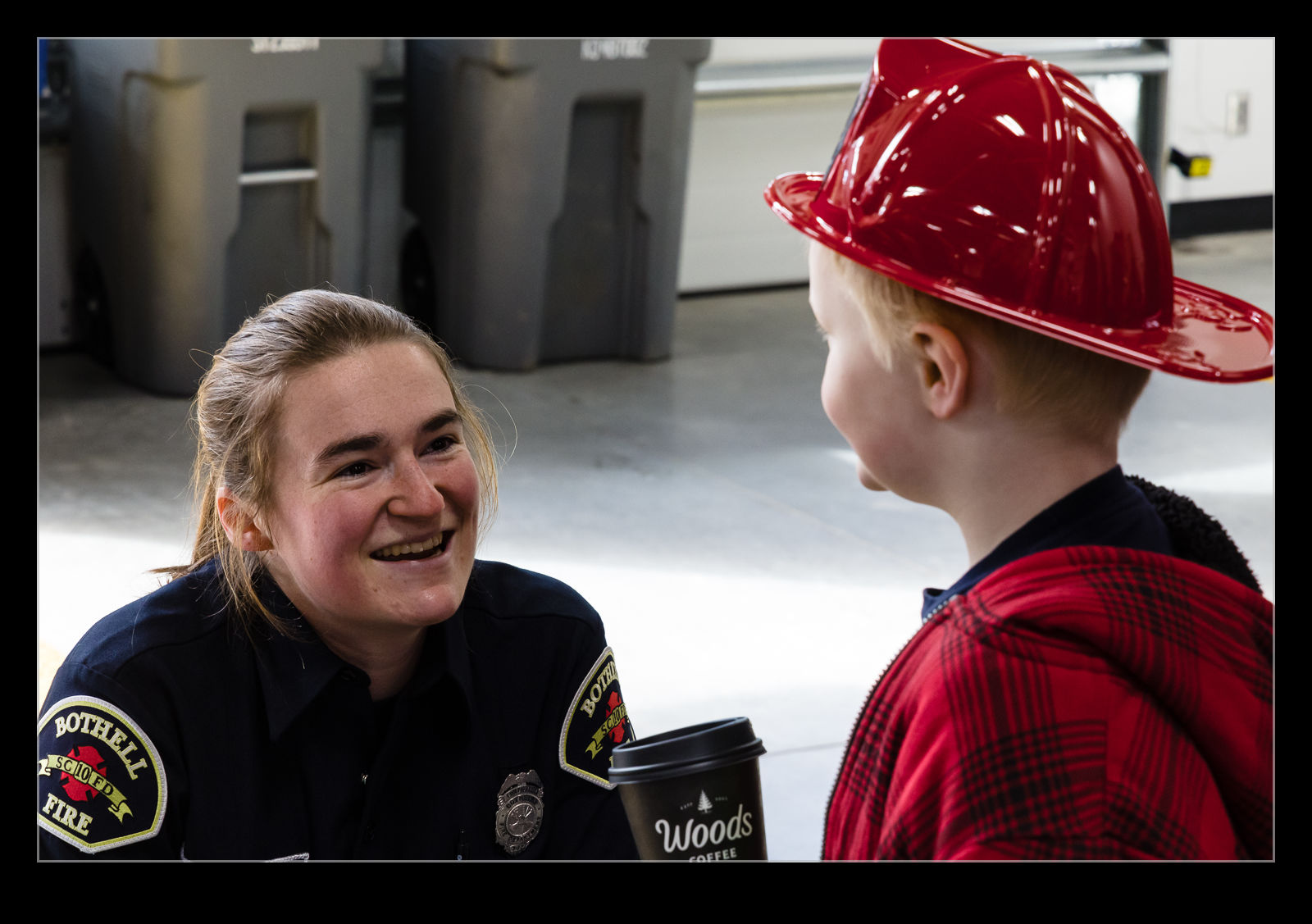 The appliances were on display in the main open space of the station with fire trucks, ambulances and assorted support vehicles for people to climb all over. These were of interest to me but I was almost more interested in the stuff around them. Storage for the equipment, venting pipes for the vehicle exhausts so they could run indoors, things like that. The one thing that they didn’t have was a pole! I guess those are no longer a standard of fire stations!
The appliances were on display in the main open space of the station with fire trucks, ambulances and assorted support vehicles for people to climb all over. These were of interest to me but I was almost more interested in the stuff around them. Storage for the equipment, venting pipes for the vehicle exhausts so they could run indoors, things like that. The one thing that they didn’t have was a pole! I guess those are no longer a standard of fire stations!
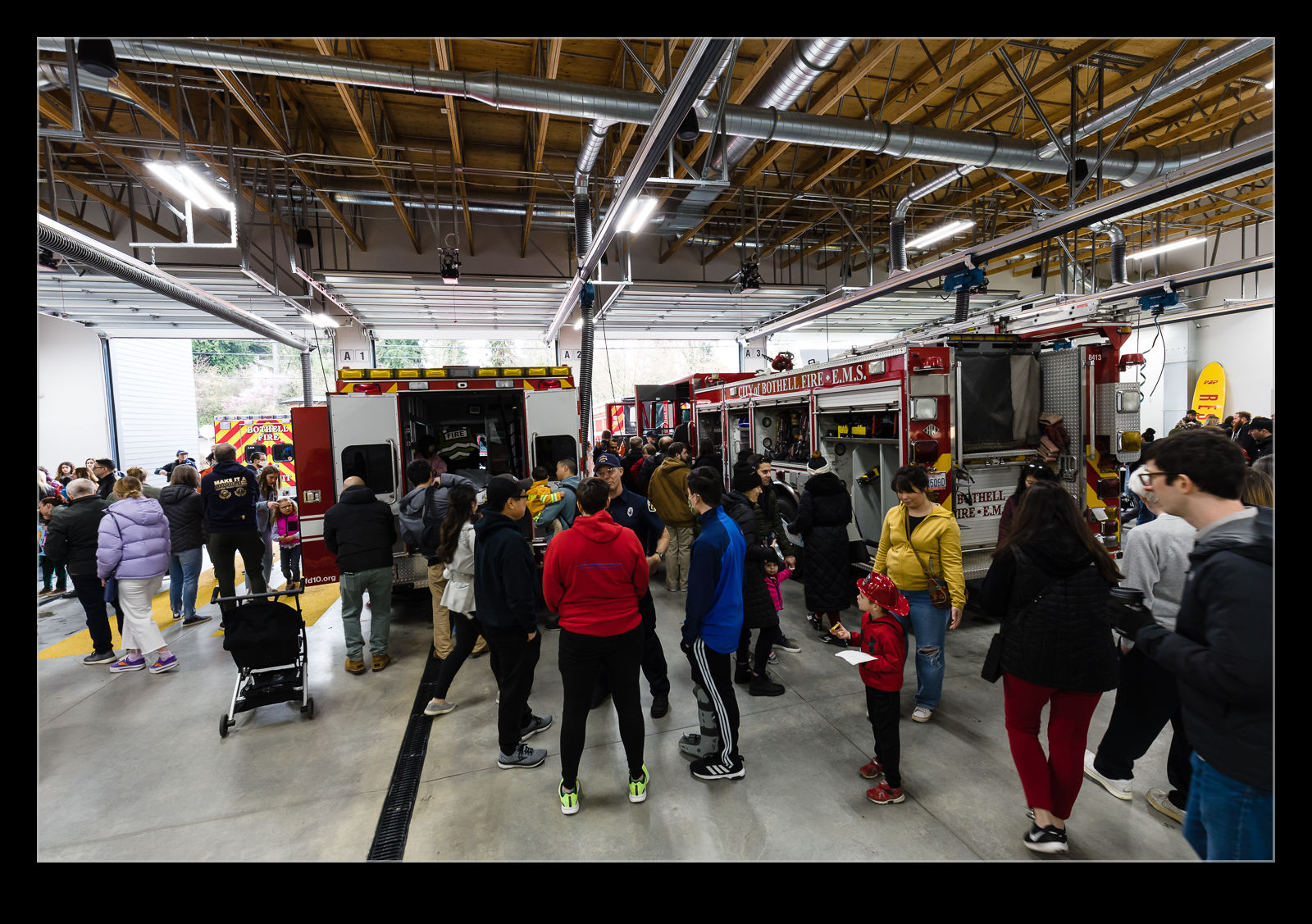 There was much more to the station to see, though. You were able to walk throughout the building and, while there were some tours explaining everything to people, I was happier going at my own speed and avoiding the worst of the congestion. The operations space where they could control the delivery of whatever services were needed was pretty compact but efficient. It was alongside a selection of offices for some of the leadership. Across from that was a gym where the crews could work out if they wanted.
There was much more to the station to see, though. You were able to walk throughout the building and, while there were some tours explaining everything to people, I was happier going at my own speed and avoiding the worst of the congestion. The operations space where they could control the delivery of whatever services were needed was pretty compact but efficient. It was alongside a selection of offices for some of the leadership. Across from that was a gym where the crews could work out if they wanted.
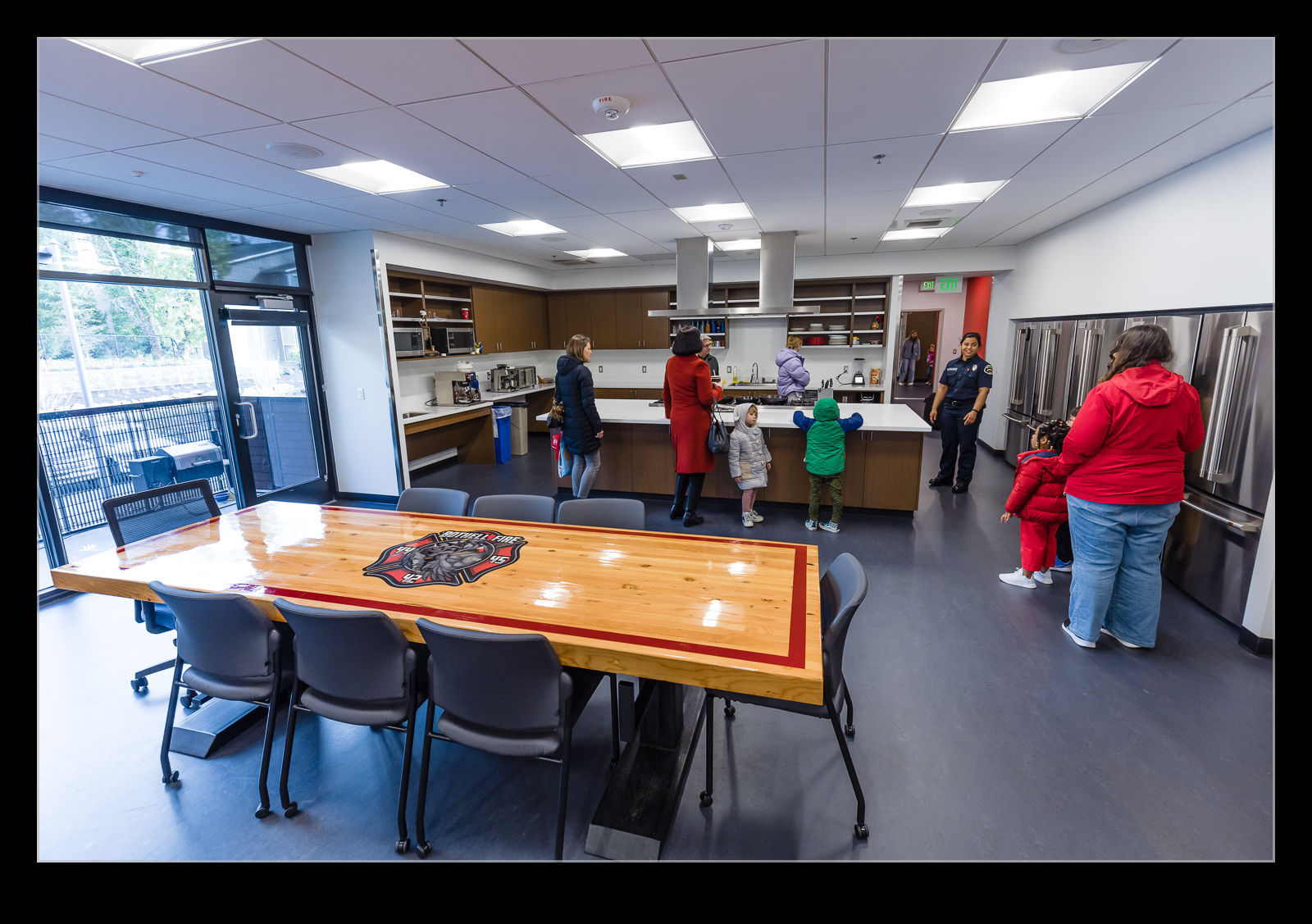 Heading upstairs and we got to the more domestic side of things. There was a large kitchen and dining area. Large cooking surfaces with big skillets were a sign of what feeding a shift involves. There were multiple refrigerators along one wall with each labeled for the shift that utilized it. I wonder whether there are ever issues with one shift pinching food from another! Next to that was a TV room with big recliners arrayed around the TV – each on embroidered with the logo of the fire station. This logo showed up in various places.
Heading upstairs and we got to the more domestic side of things. There was a large kitchen and dining area. Large cooking surfaces with big skillets were a sign of what feeding a shift involves. There were multiple refrigerators along one wall with each labeled for the shift that utilized it. I wonder whether there are ever issues with one shift pinching food from another! Next to that was a TV room with big recliners arrayed around the TV – each on embroidered with the logo of the fire station. This logo showed up in various places.
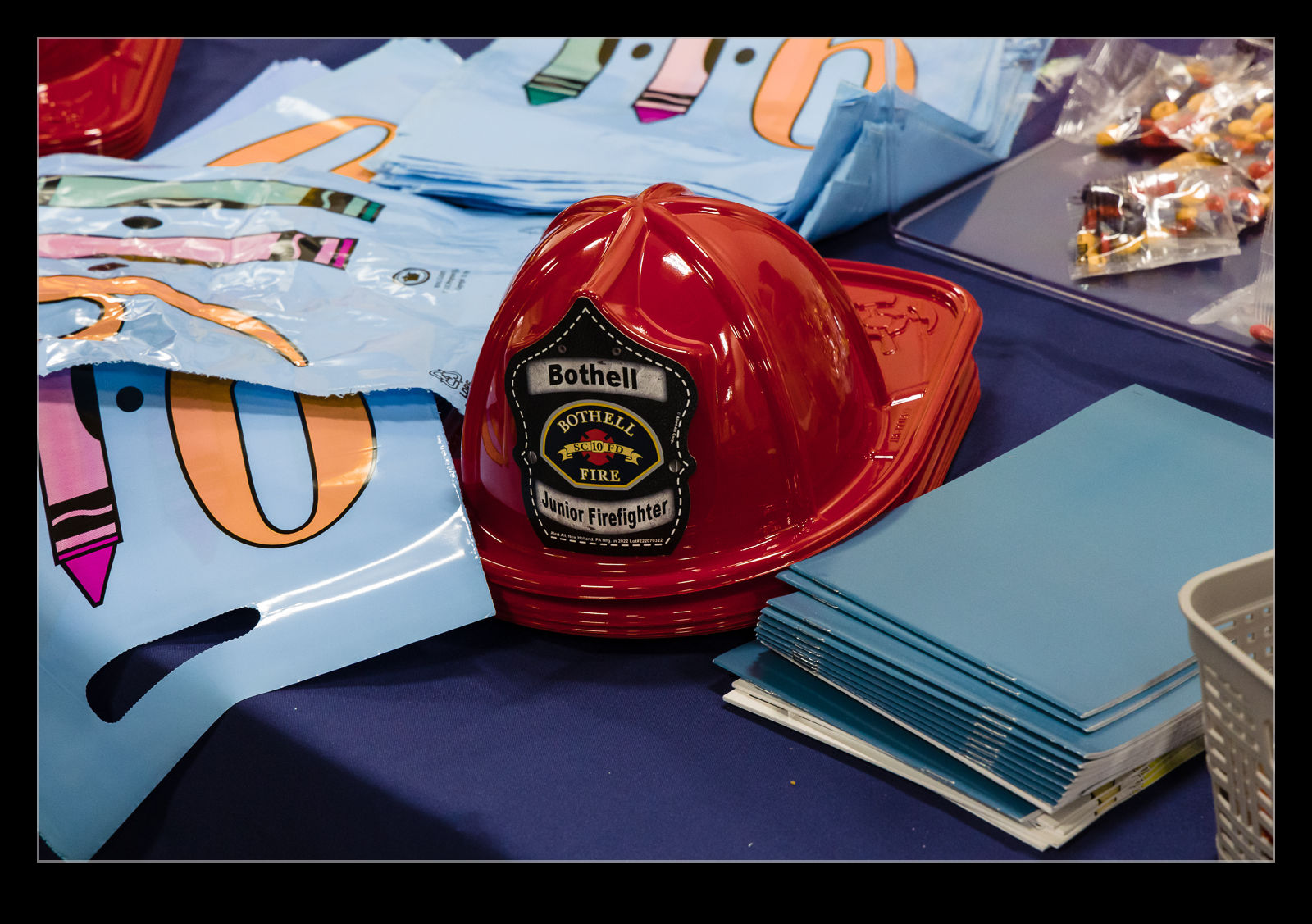 Next was the accommodation space. There were bunk rooms available for the crews to use. I understood that they would be on watch for long periods so could eat, relax, sleep, shower and work out while they were not required for operations. The bunk rooms were compact and basic but looked like they would do the job nicely.
Next was the accommodation space. There were bunk rooms available for the crews to use. I understood that they would be on watch for long periods so could eat, relax, sleep, shower and work out while they were not required for operations. The bunk rooms were compact and basic but looked like they would do the job nicely.
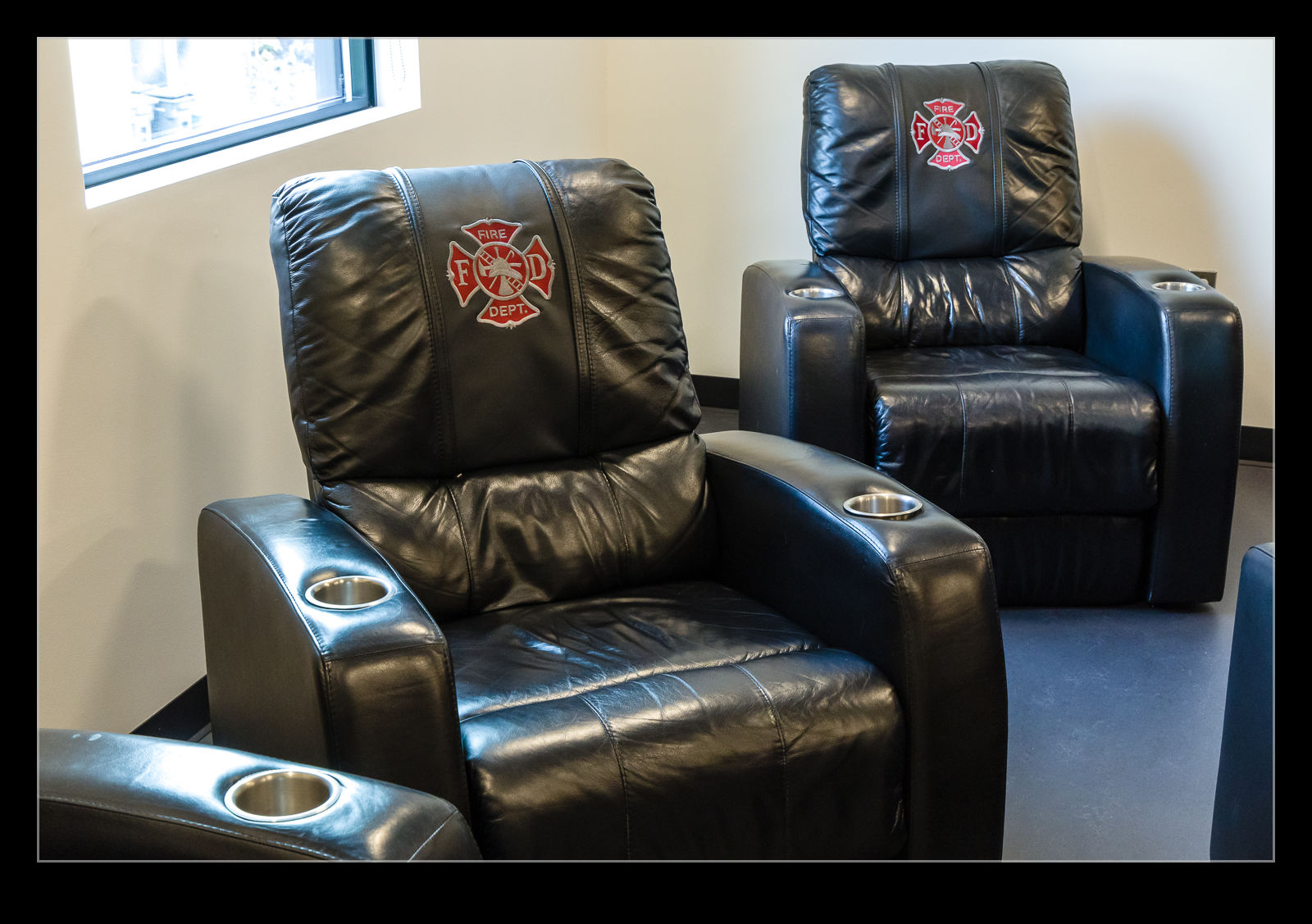 It was interesting to see what a modern fire station involves. I hadn’t really given it much thought before and seeing the layout gave me a new appreciation for what the crews’ lives can be like. The new building was clearly a nice upgrade for the facility and it was functional but not unattractive. They even had some sculpture work outside. A lot of effort went in to putting the place together. I hope they find it beneficial.
It was interesting to see what a modern fire station involves. I hadn’t really given it much thought before and seeing the layout gave me a new appreciation for what the crews’ lives can be like. The new building was clearly a nice upgrade for the facility and it was functional but not unattractive. They even had some sculpture work outside. A lot of effort went in to putting the place together. I hope they find it beneficial.
